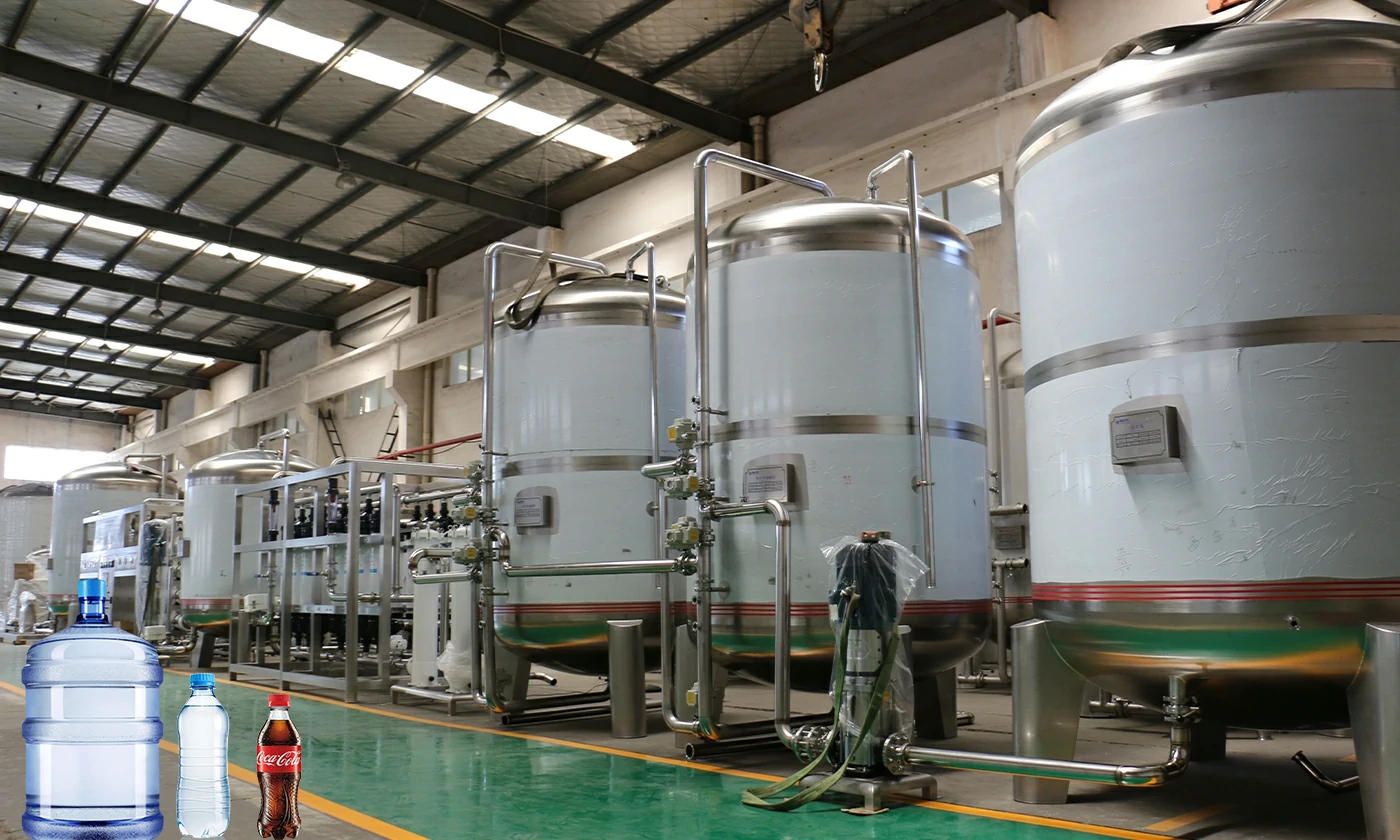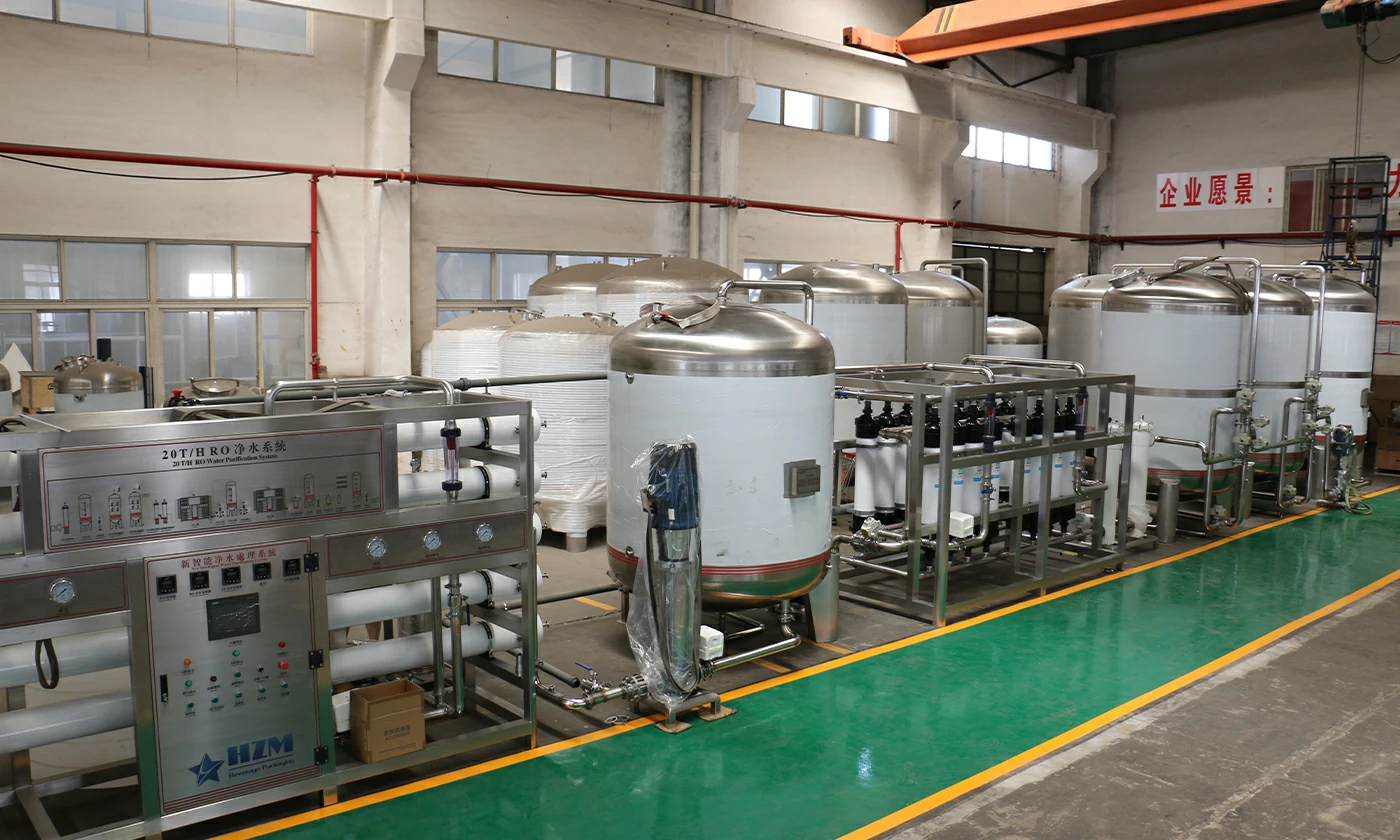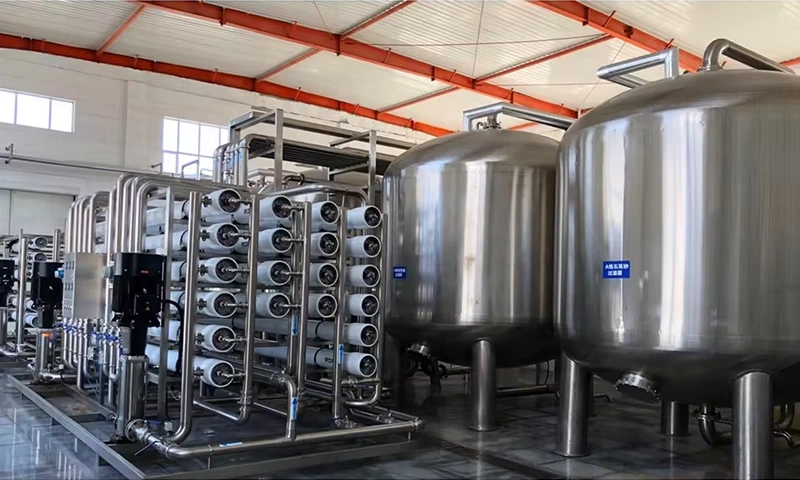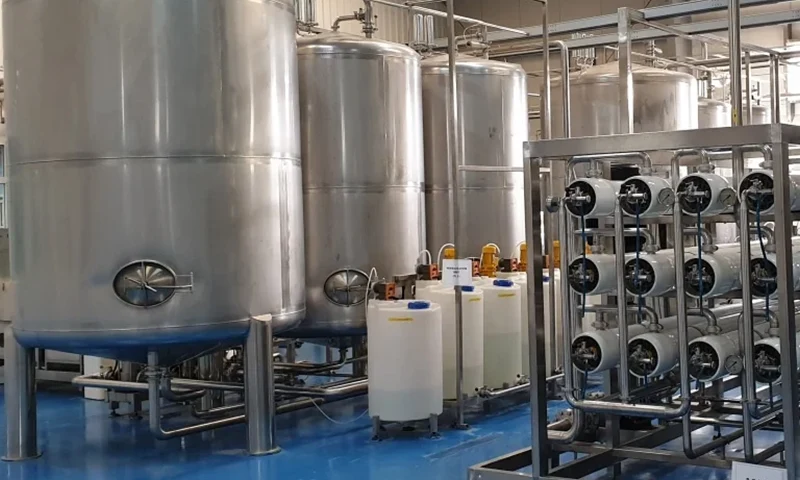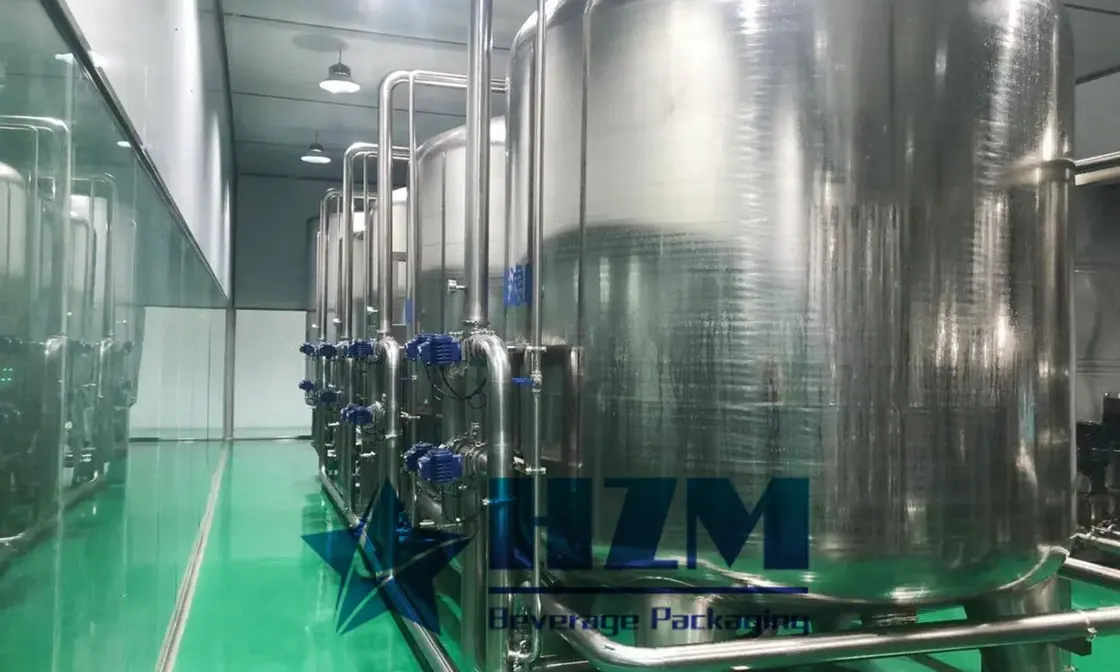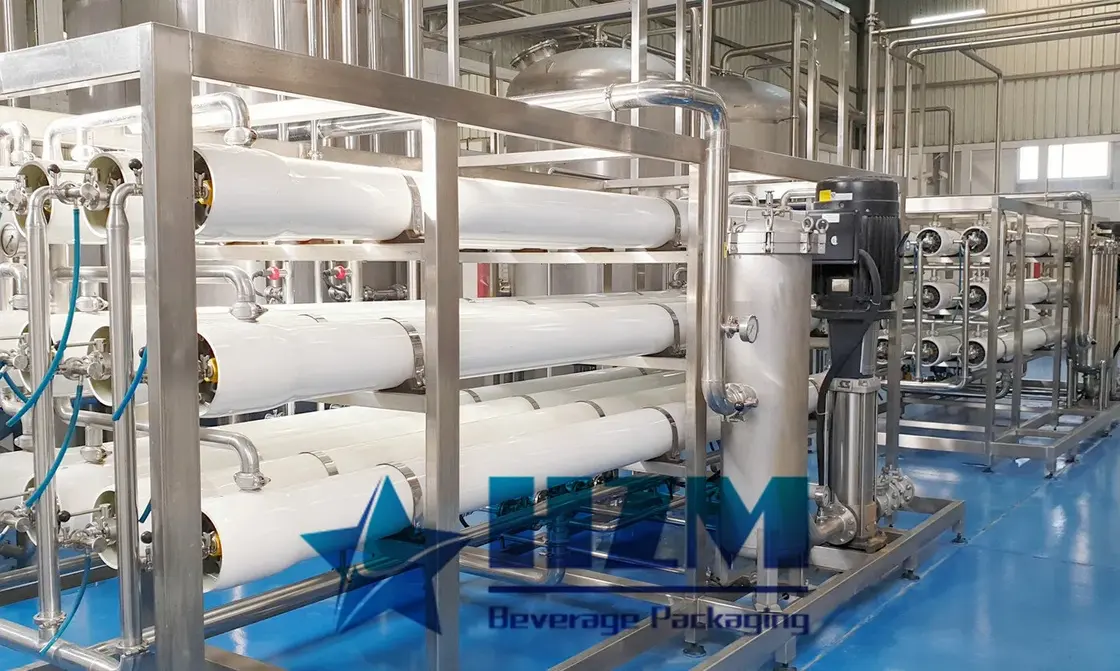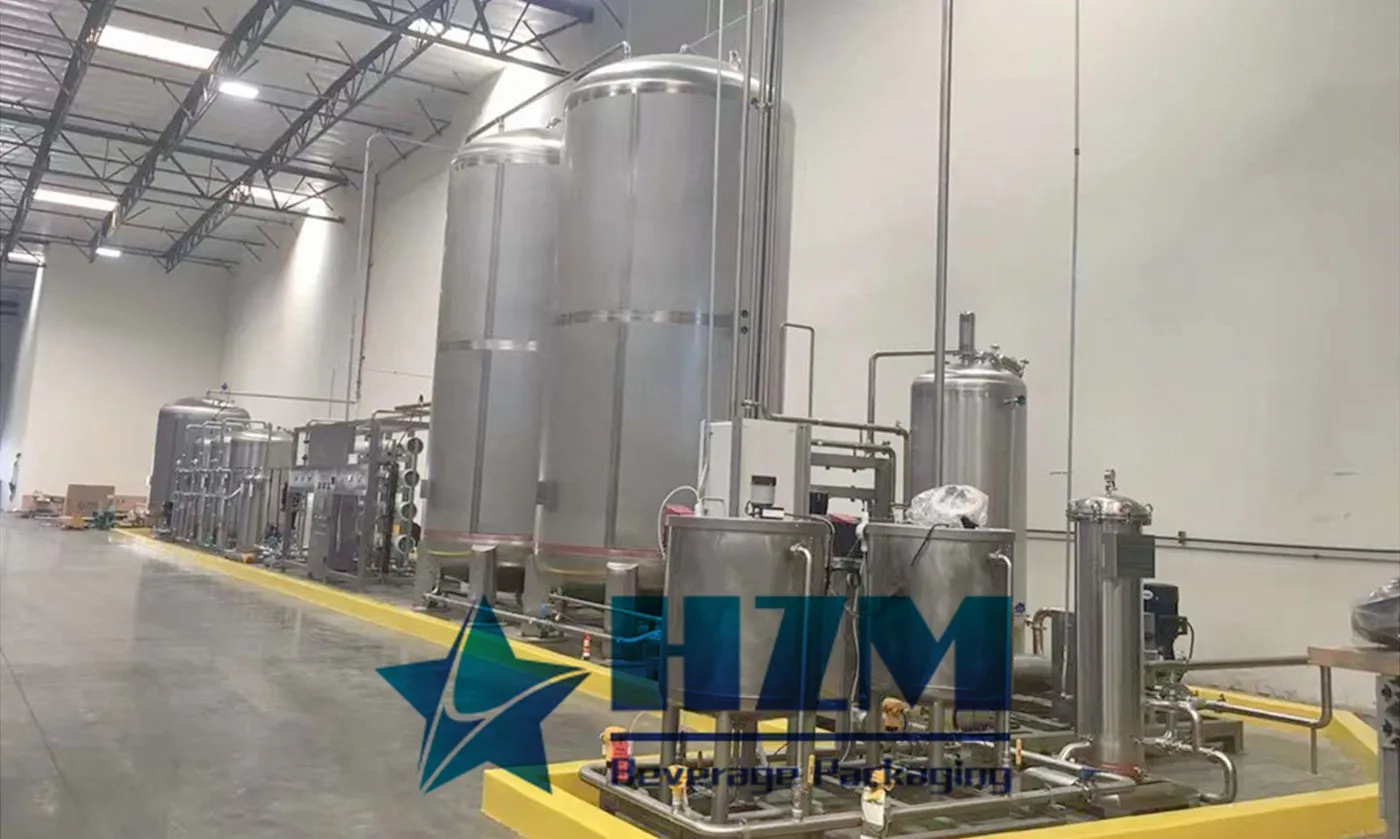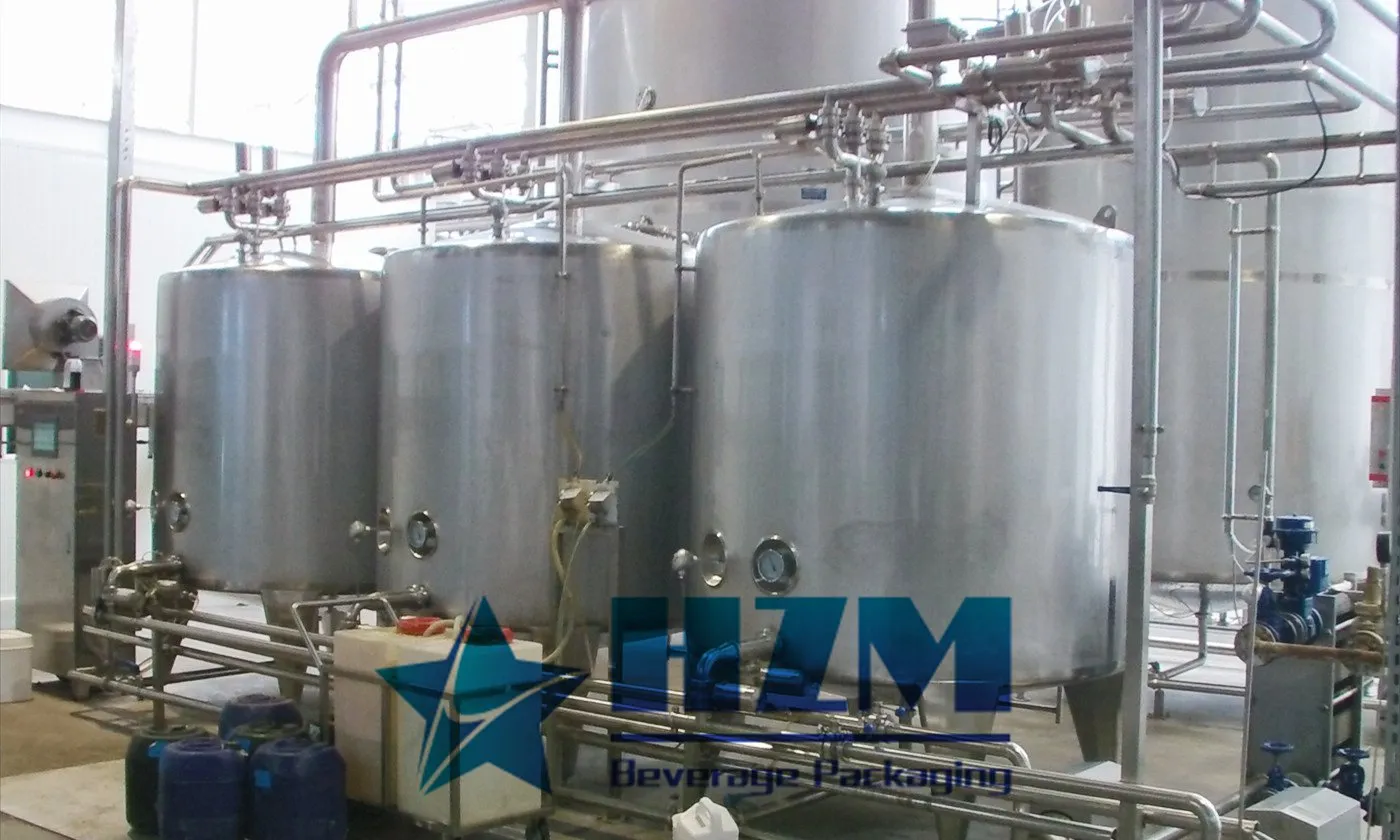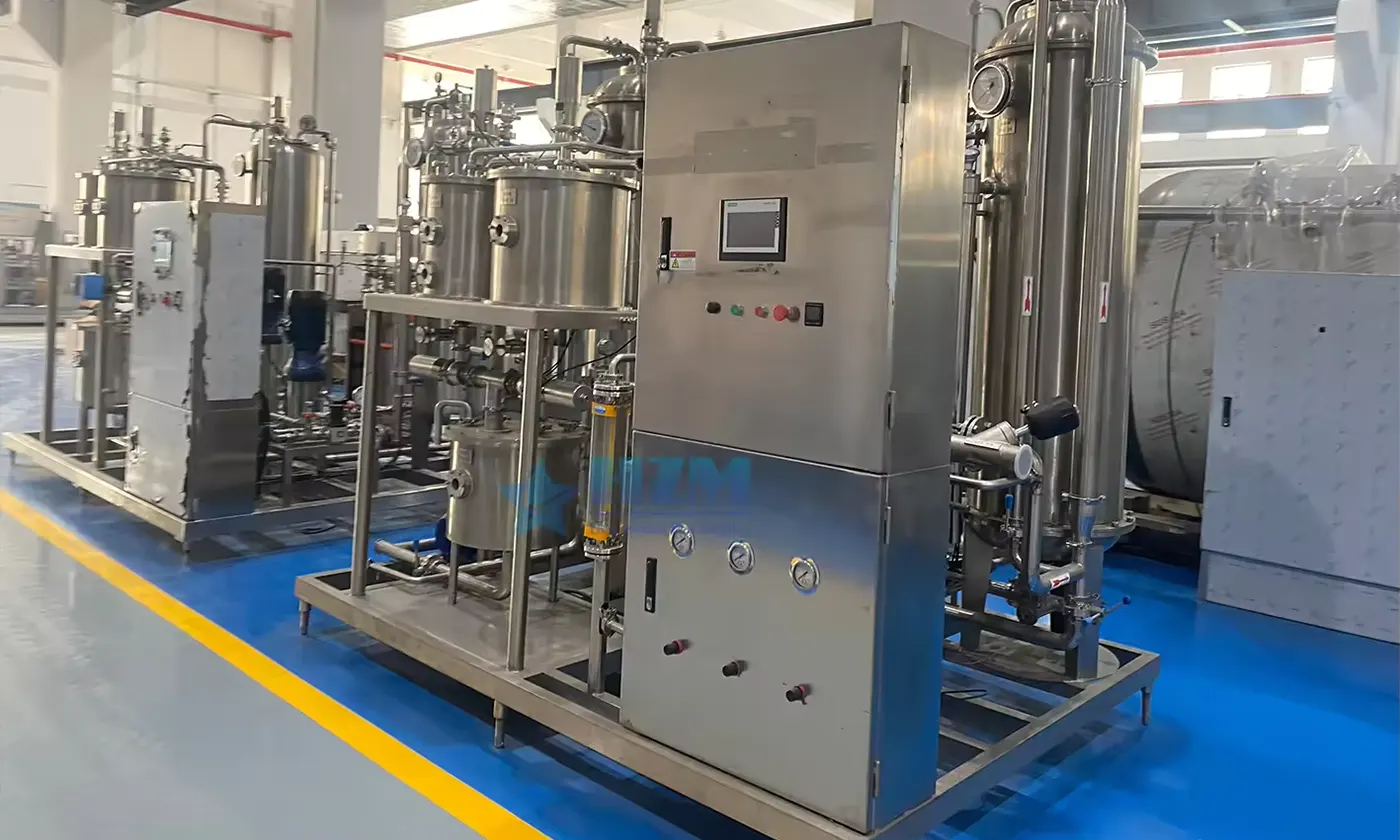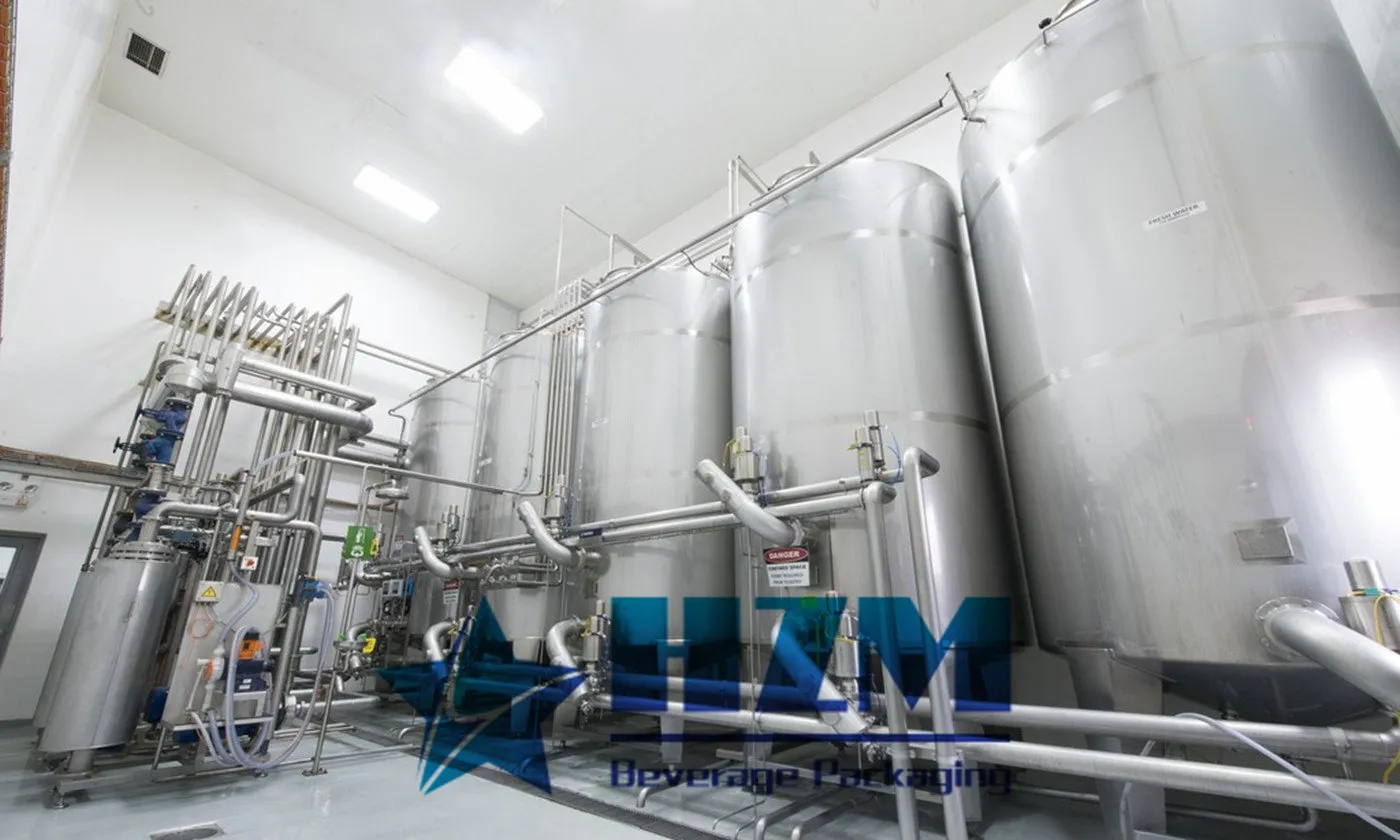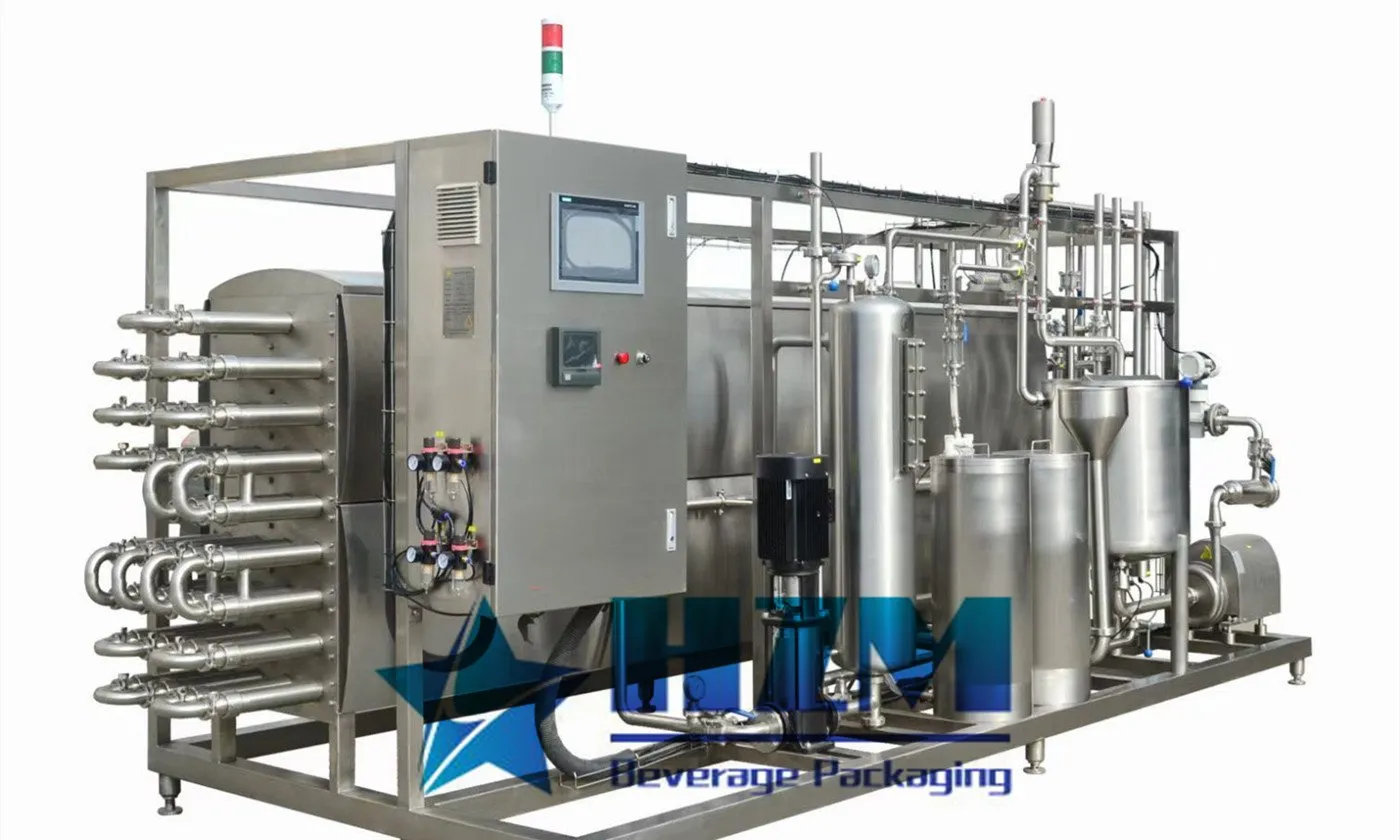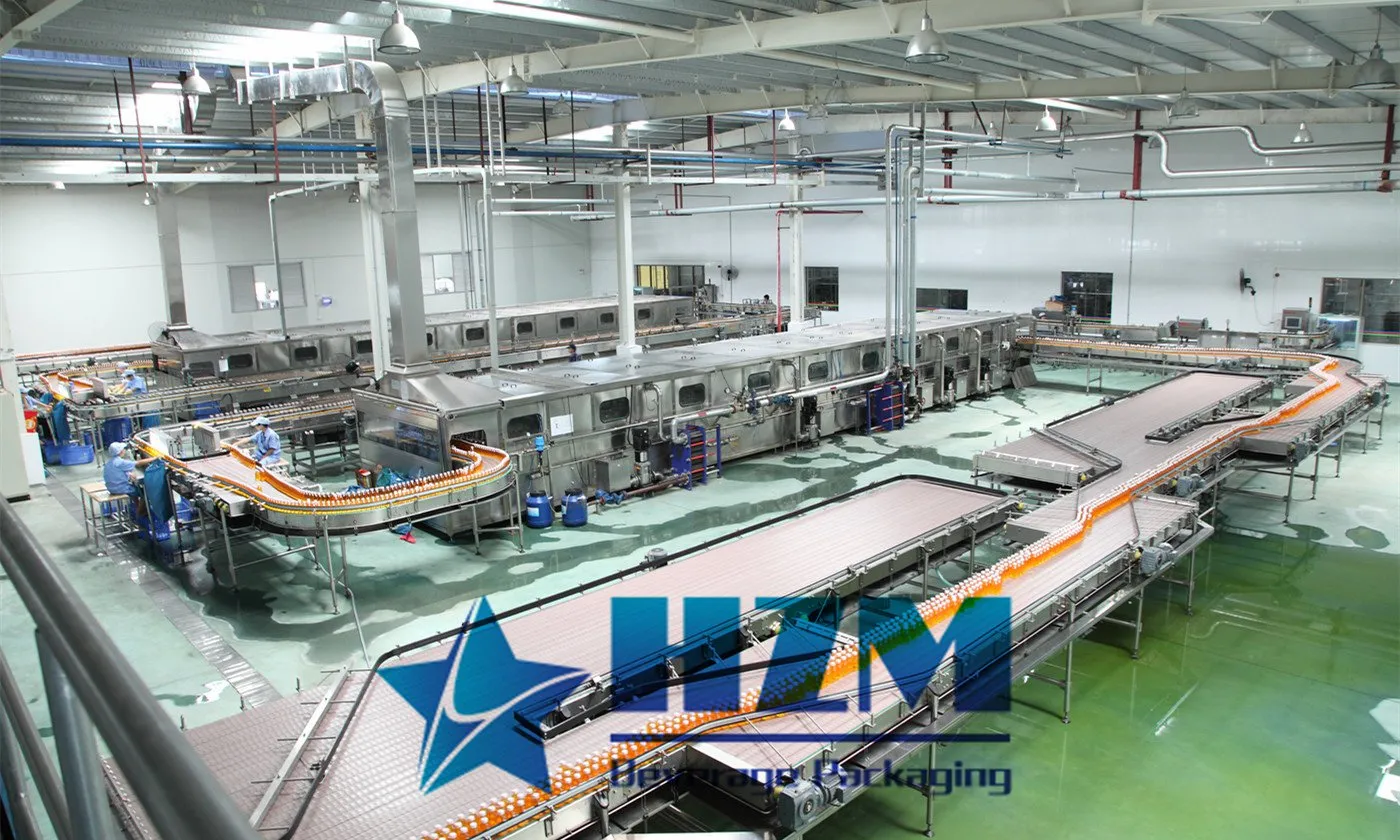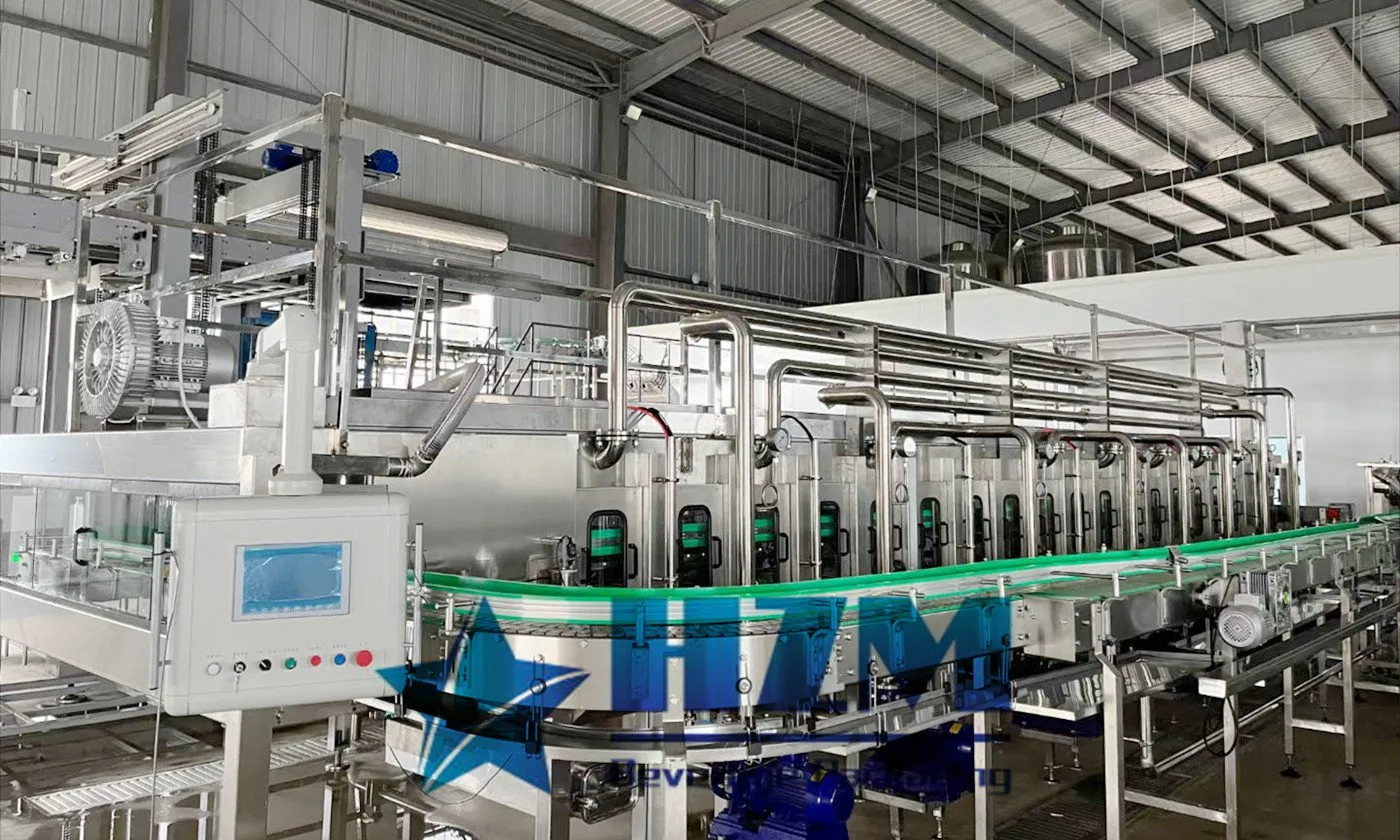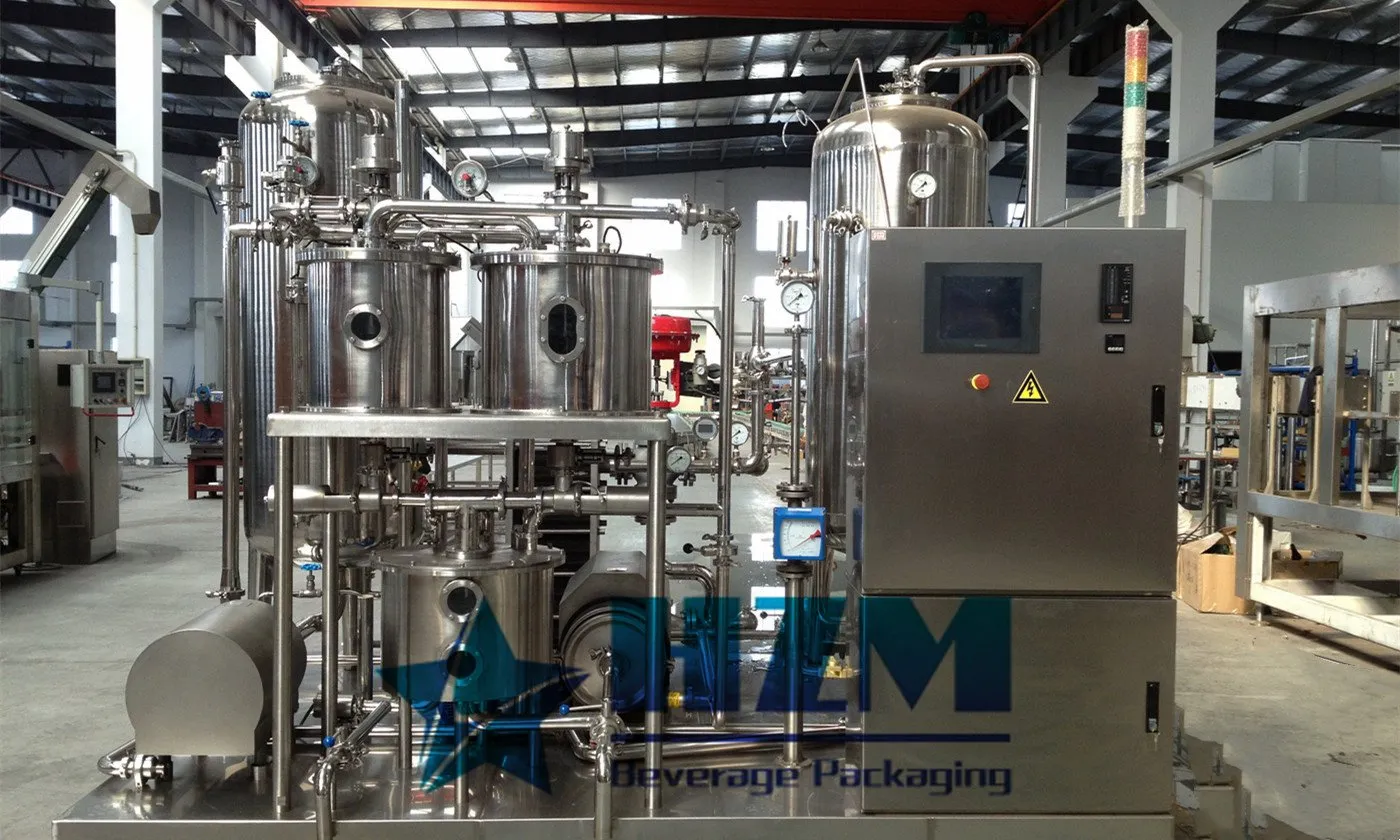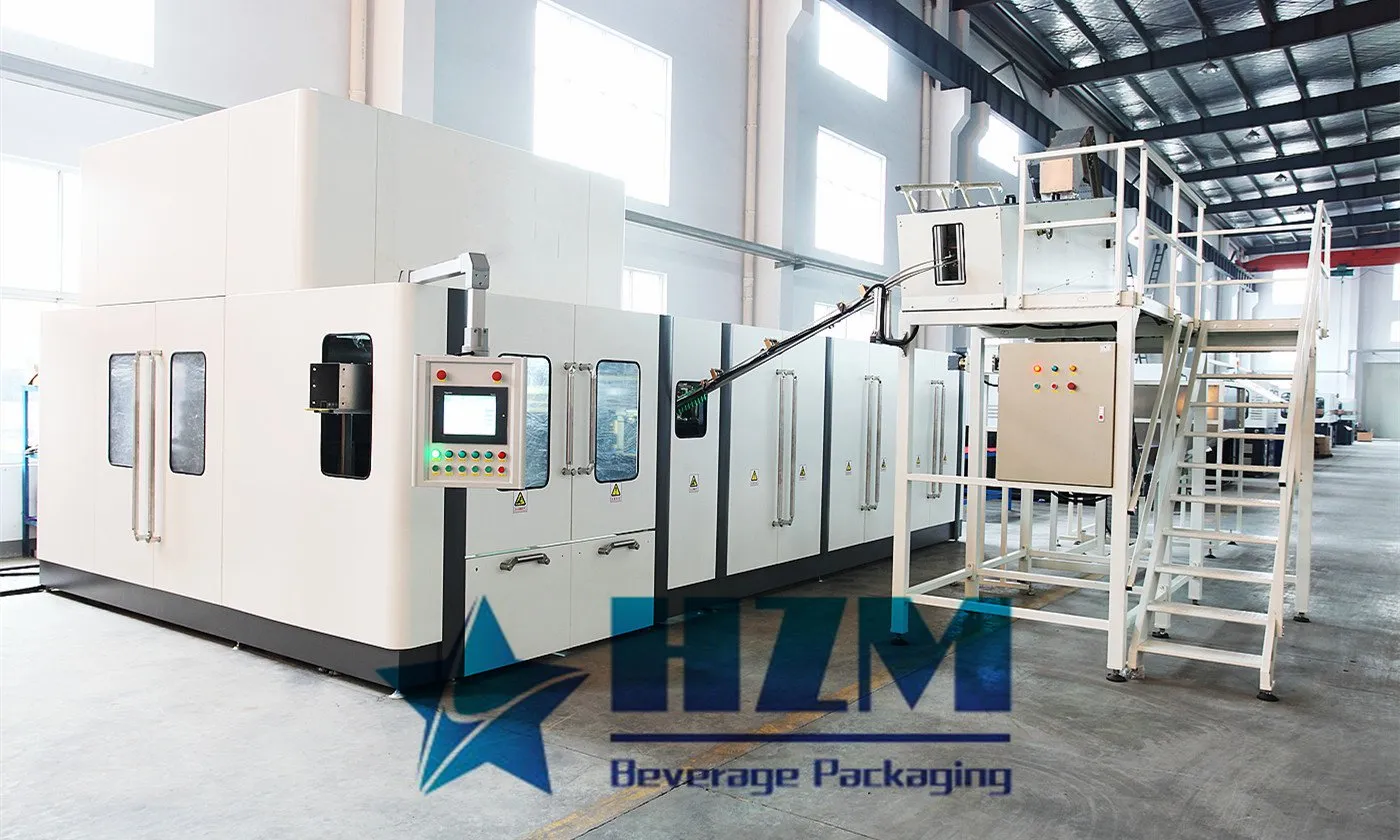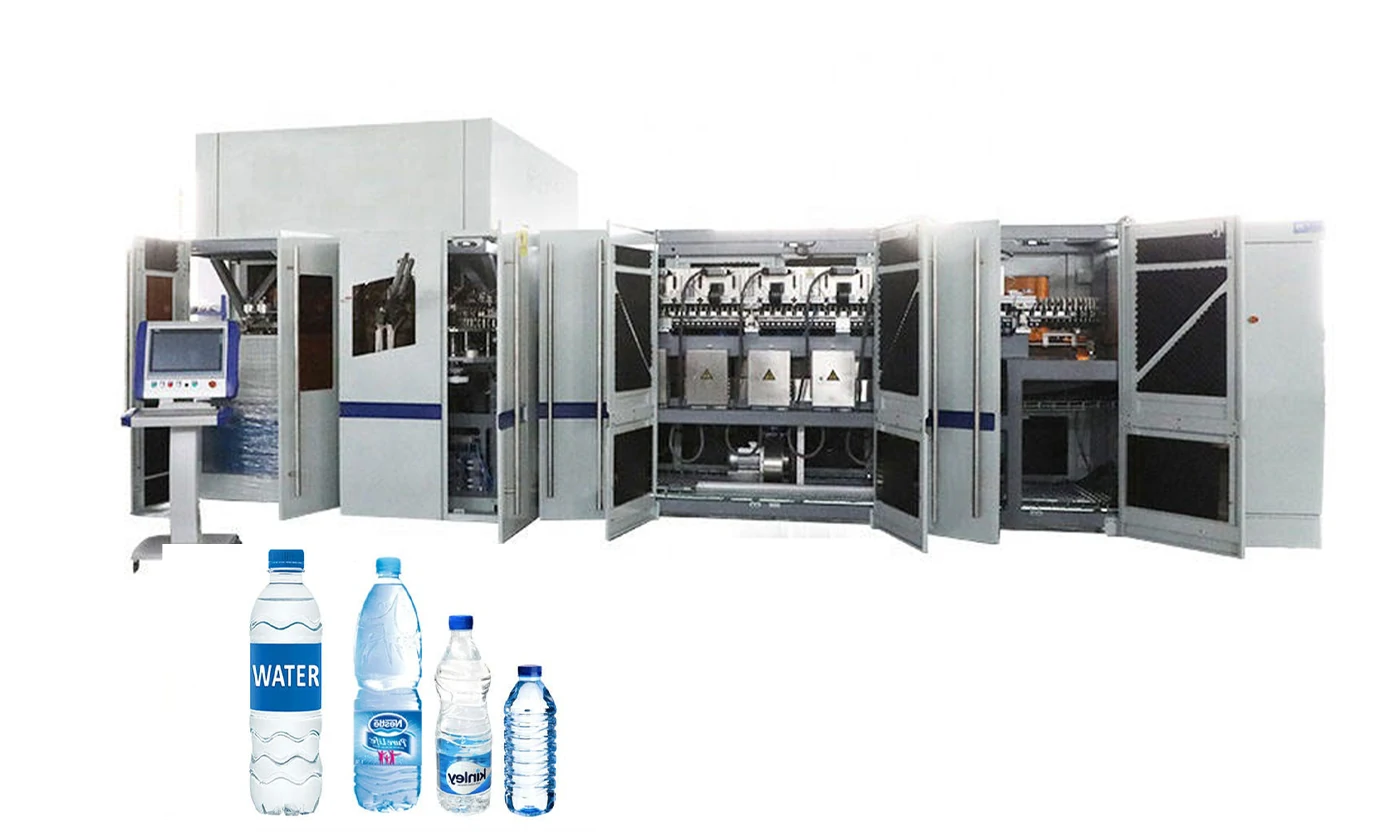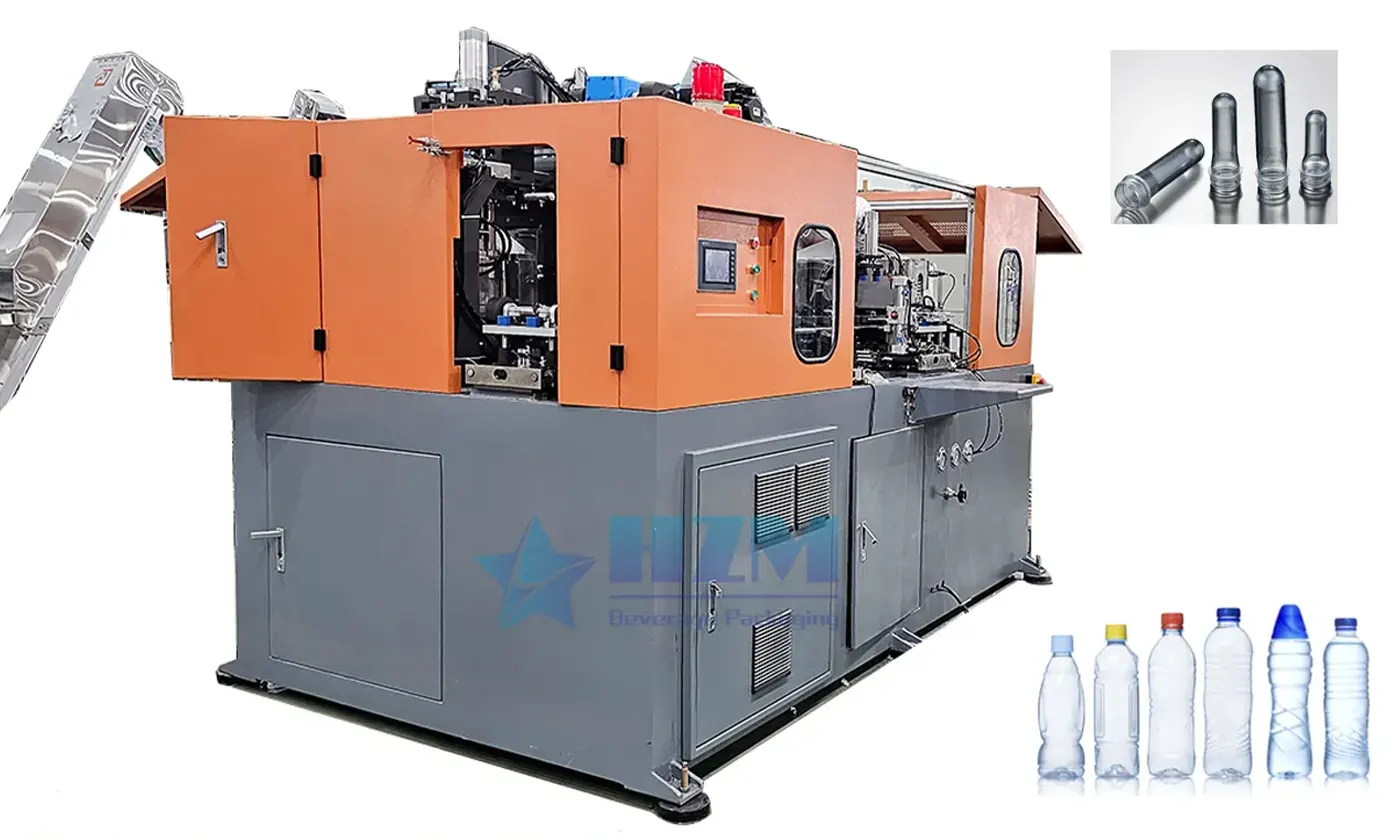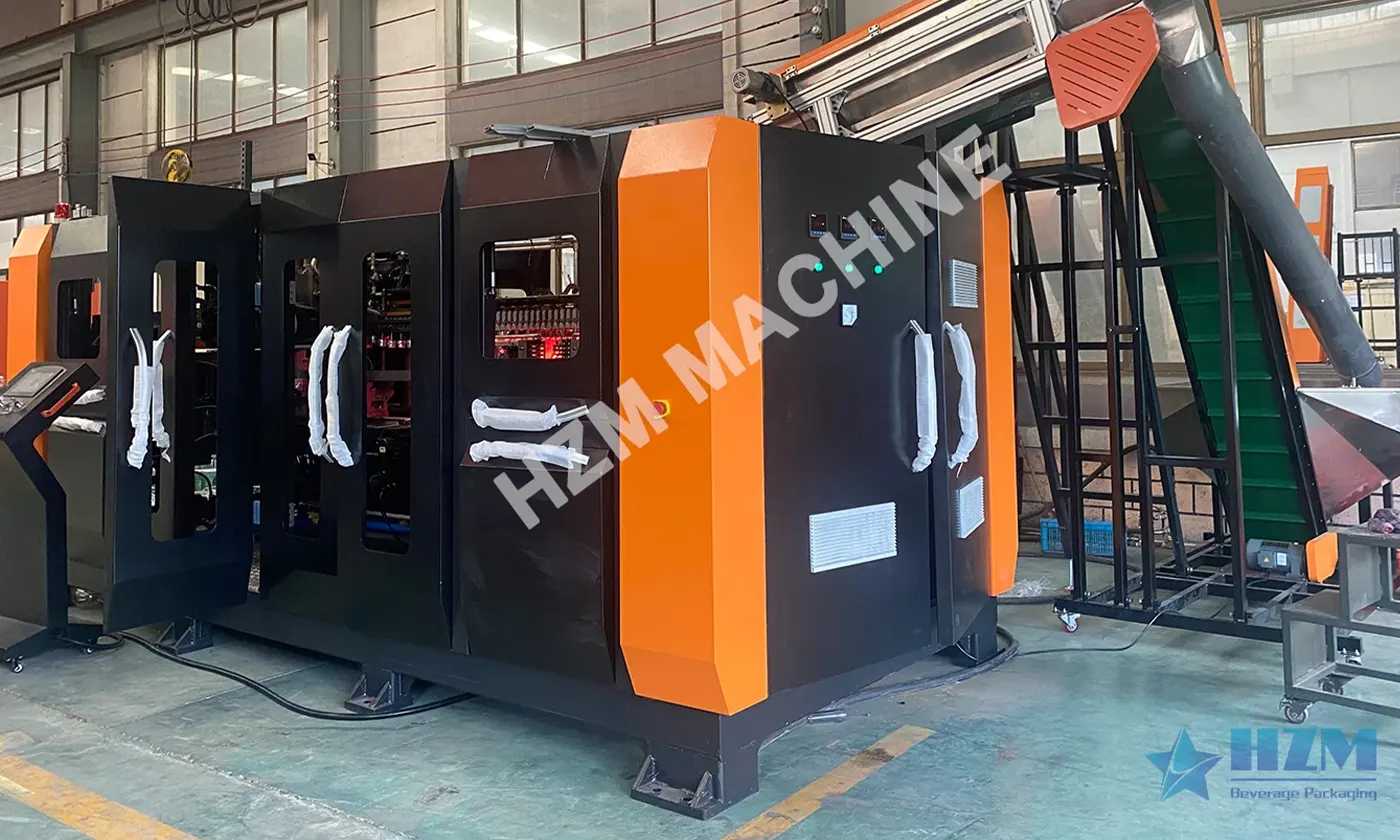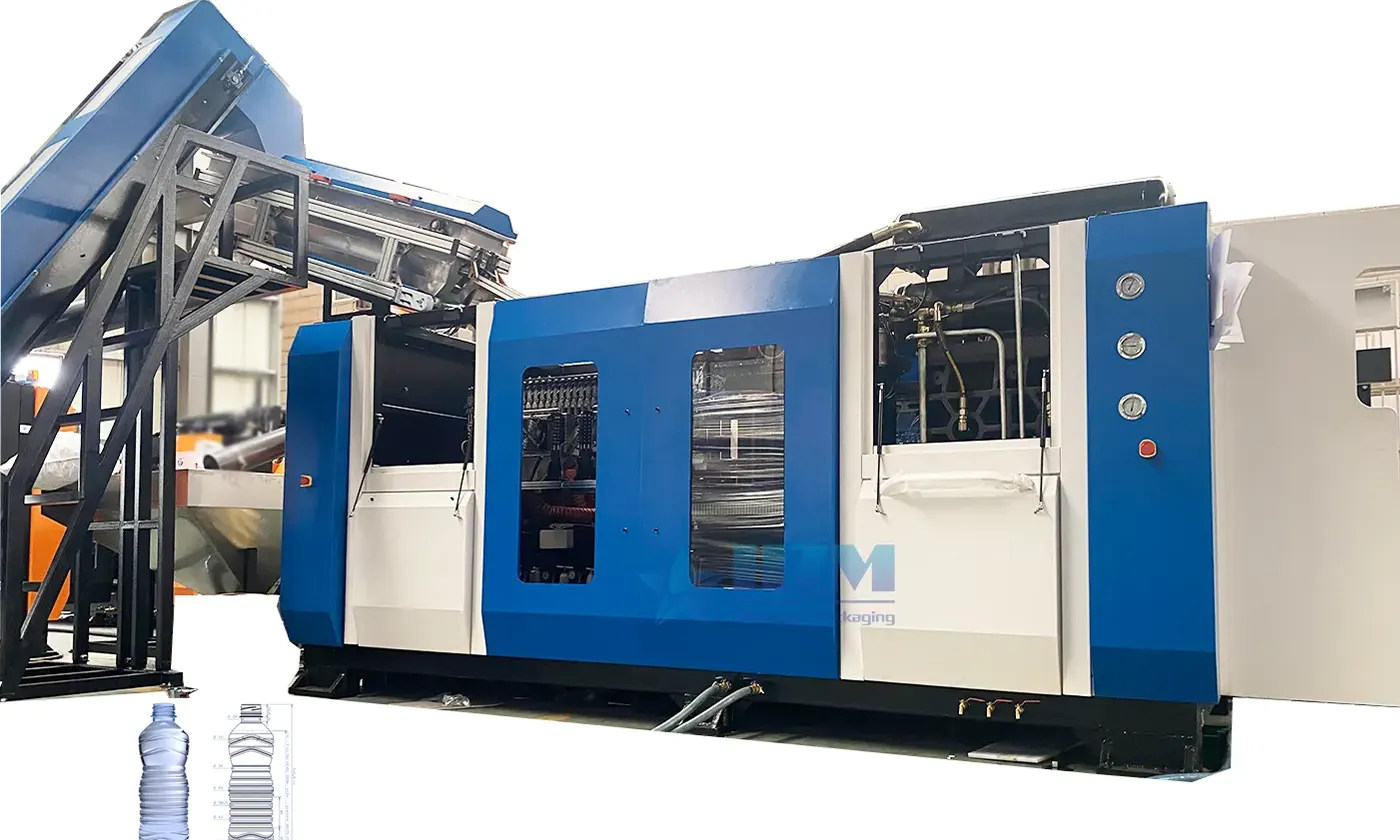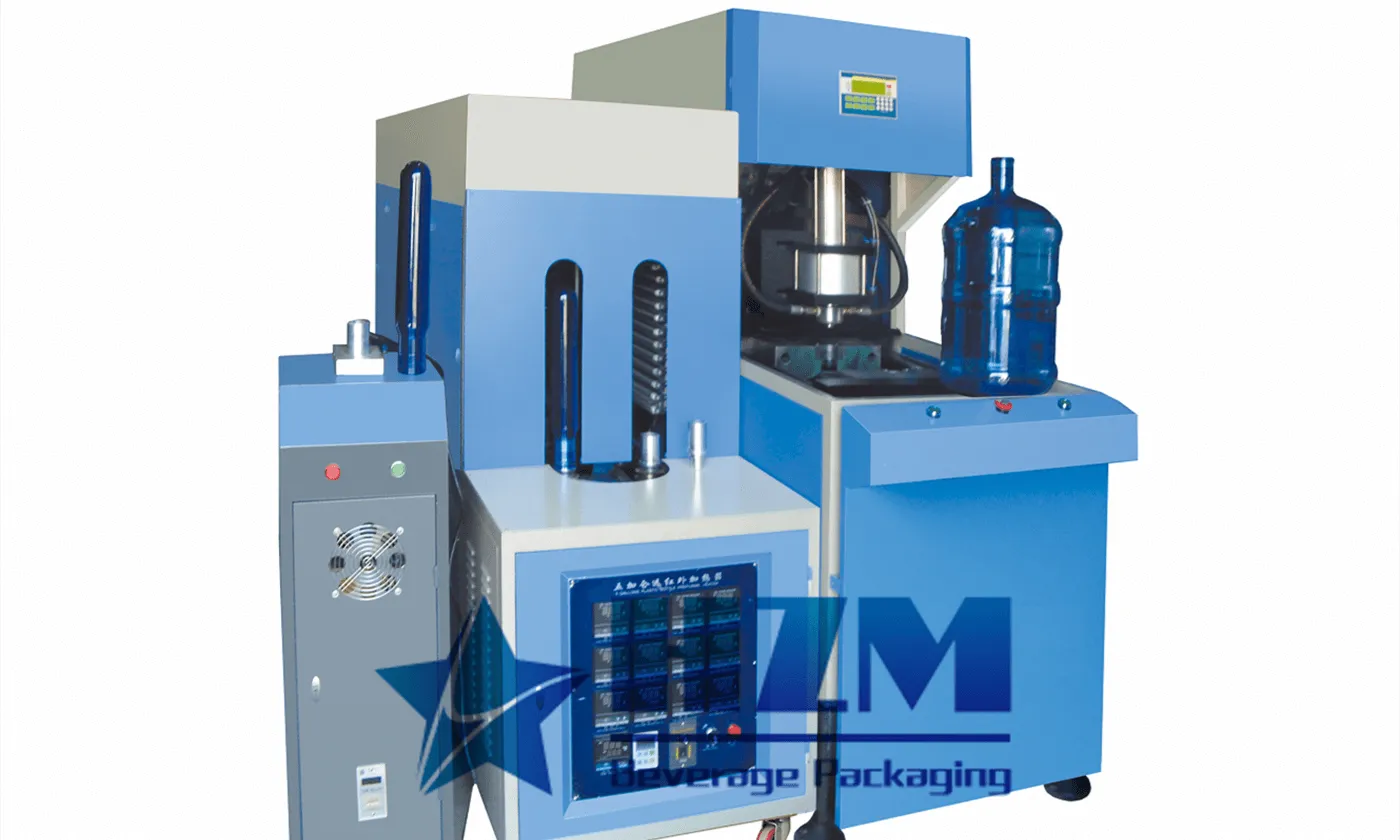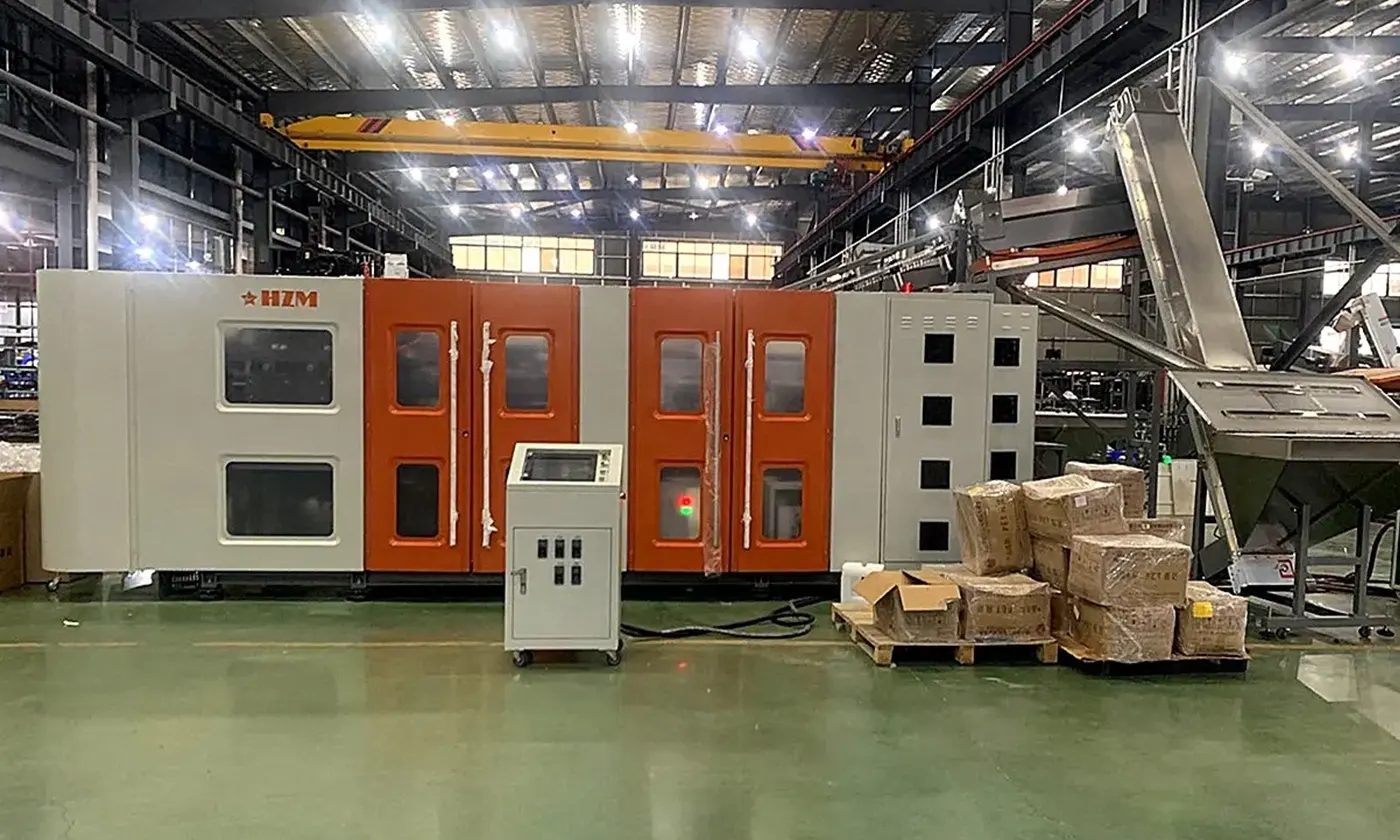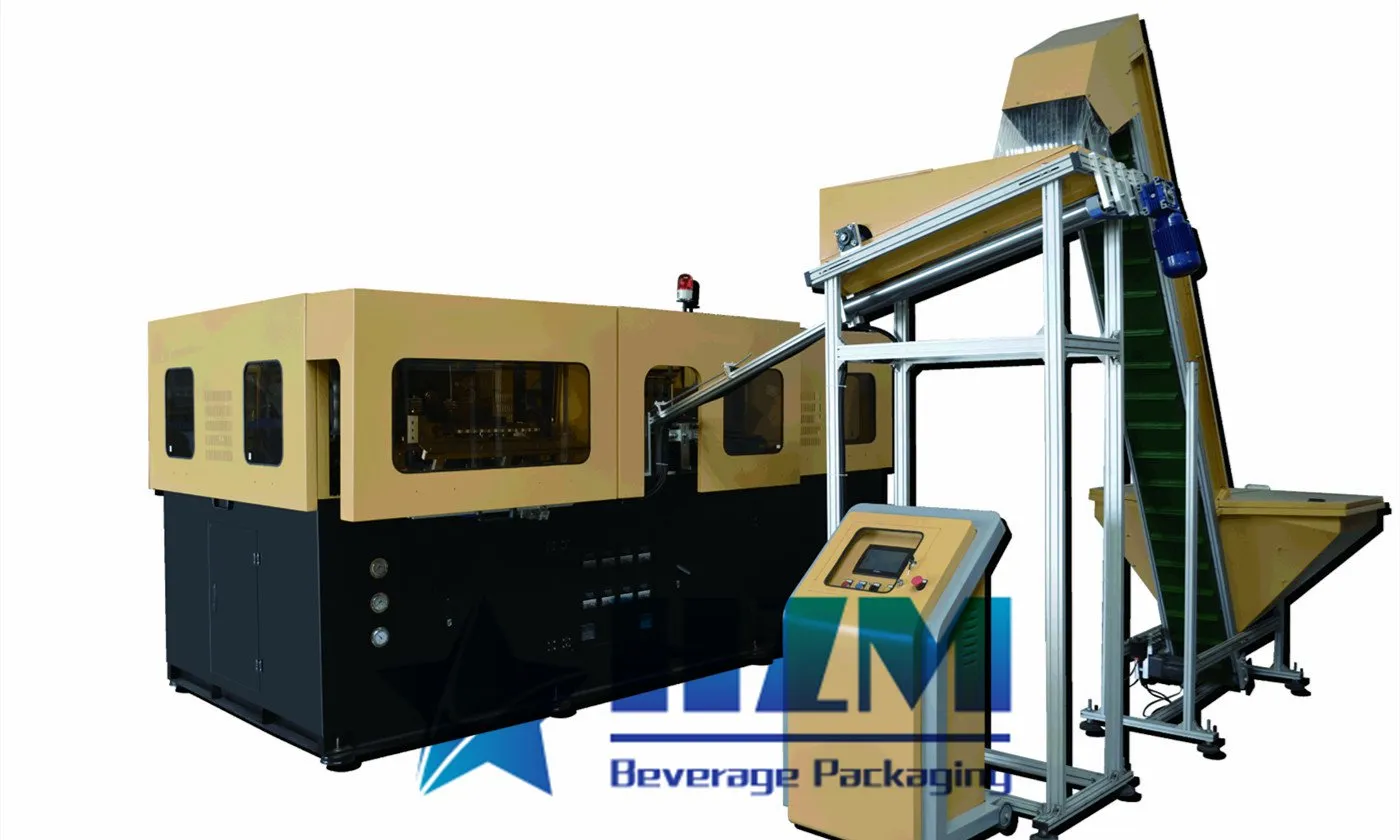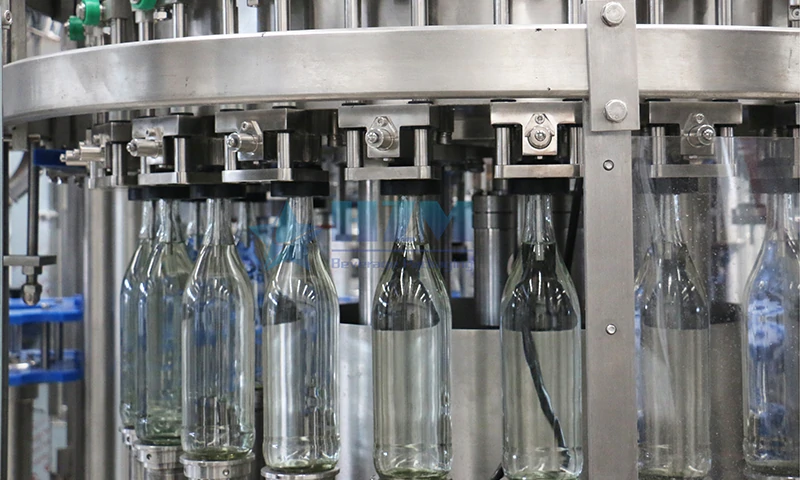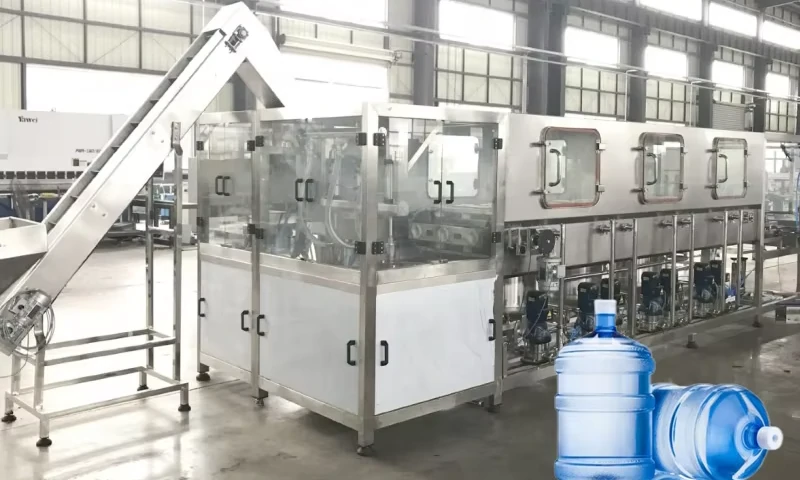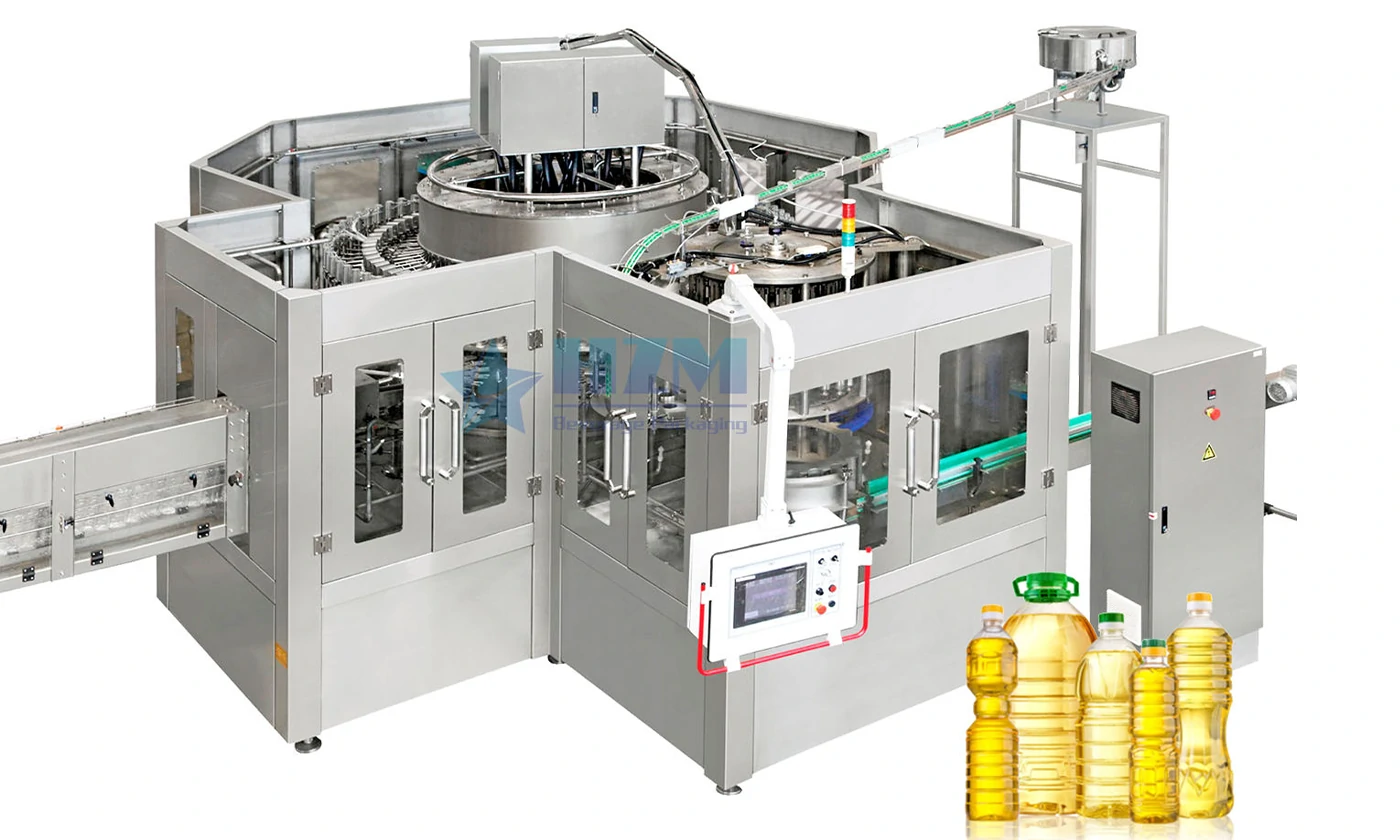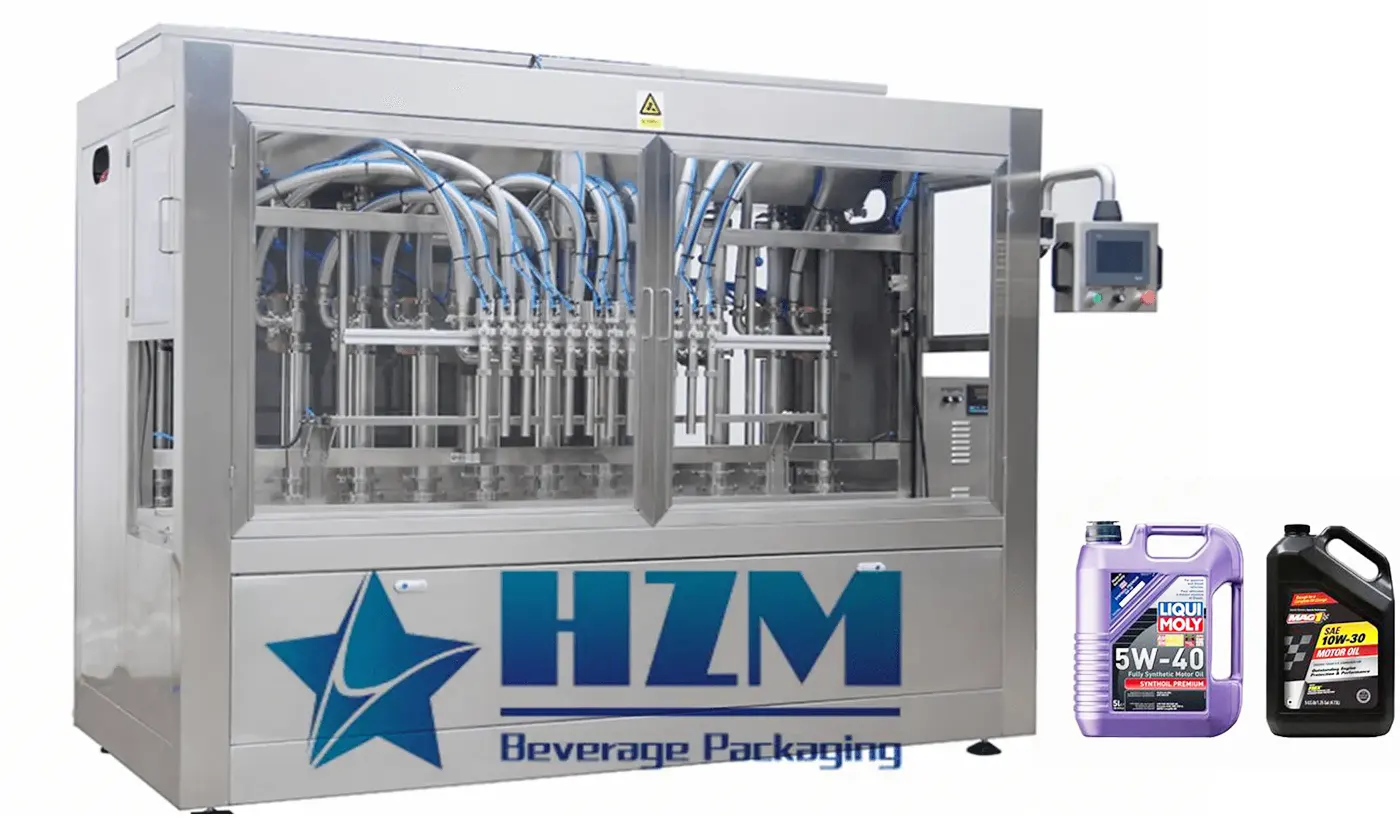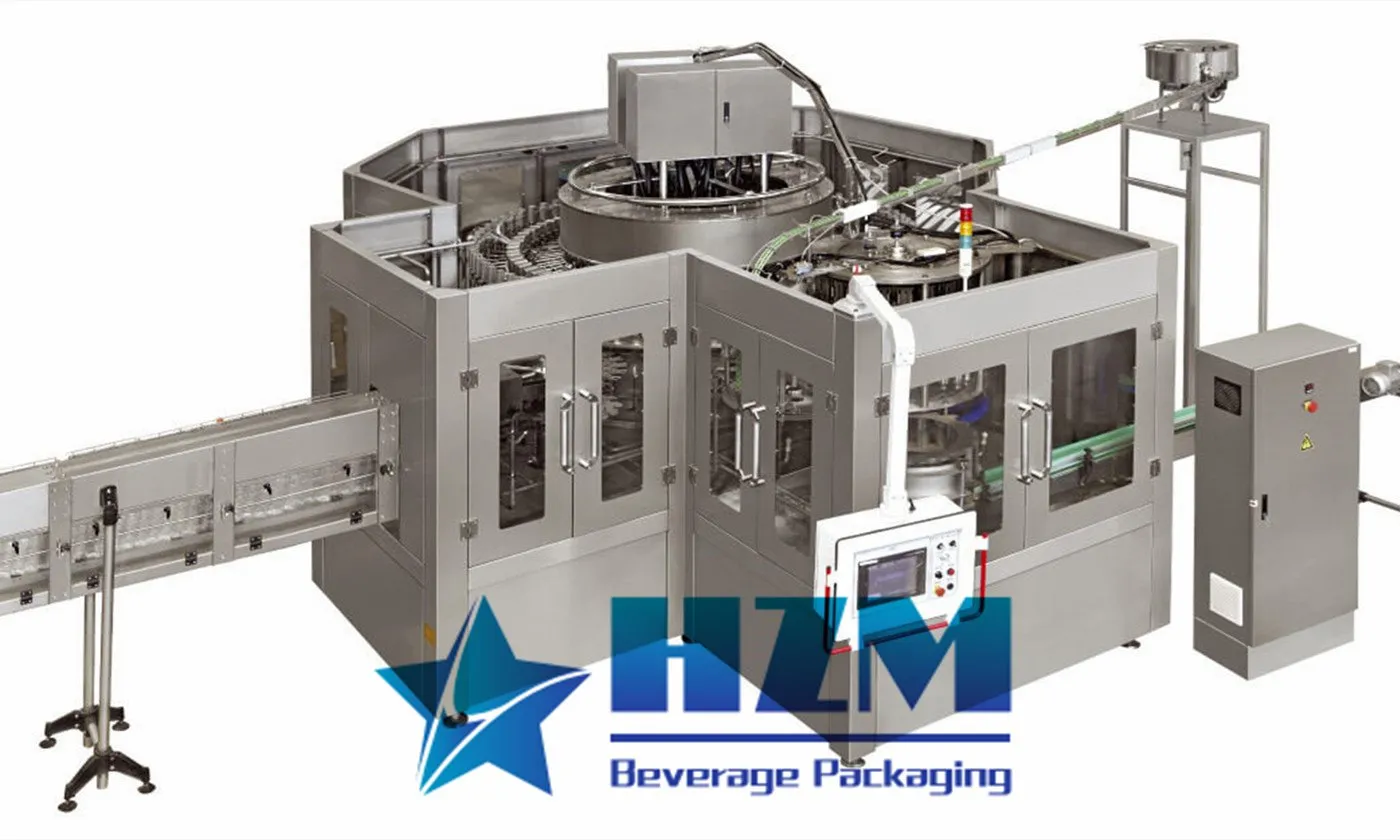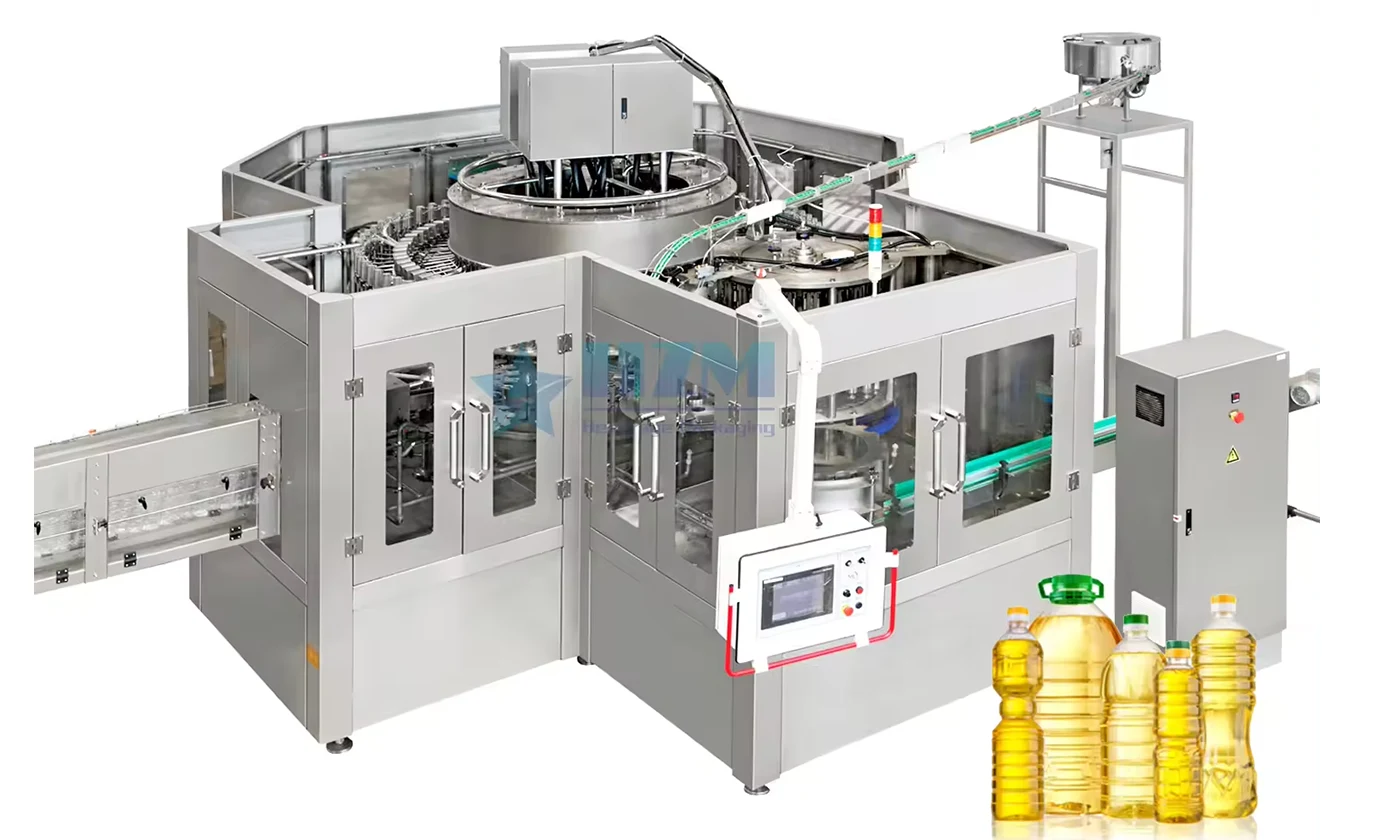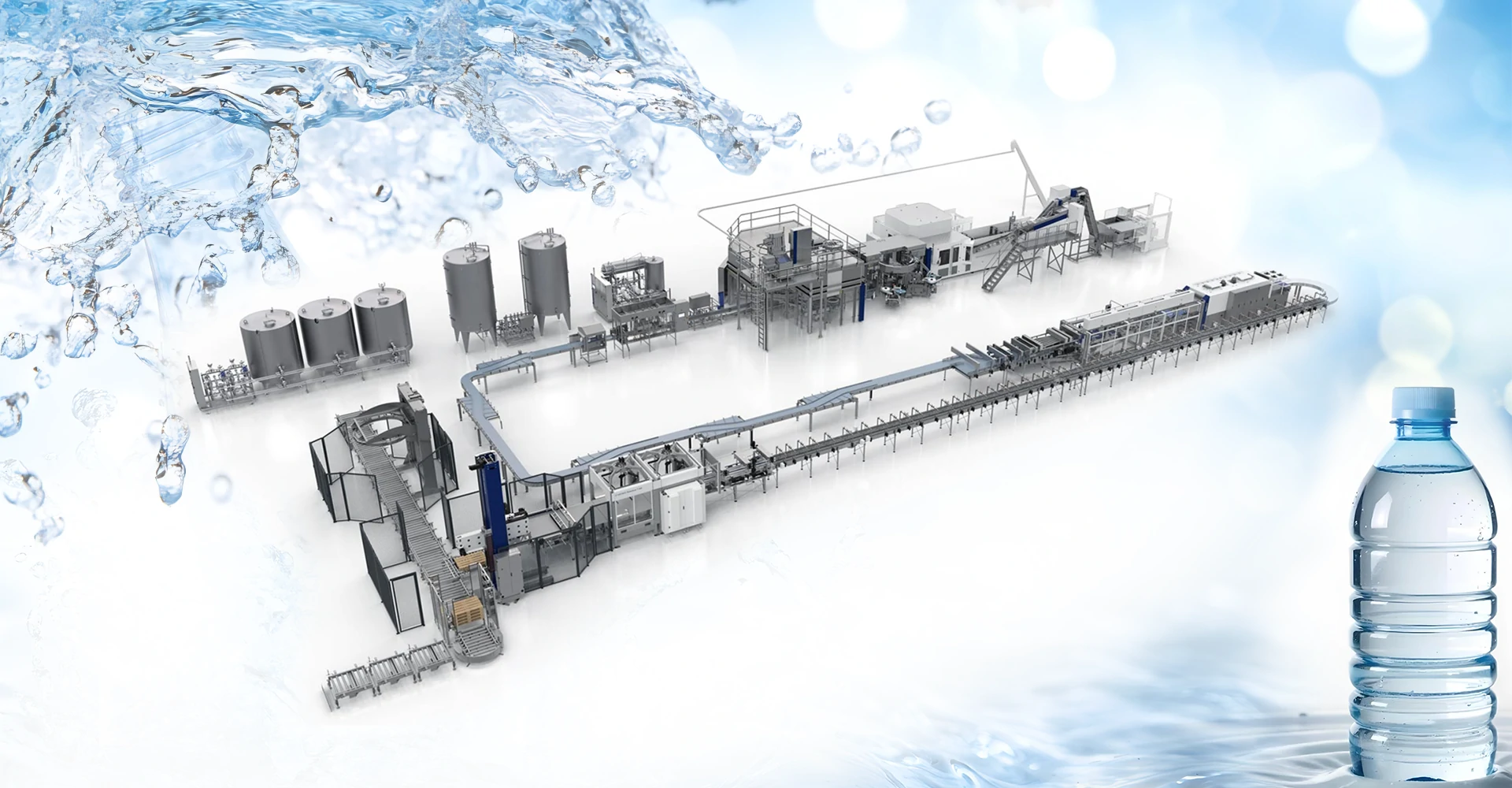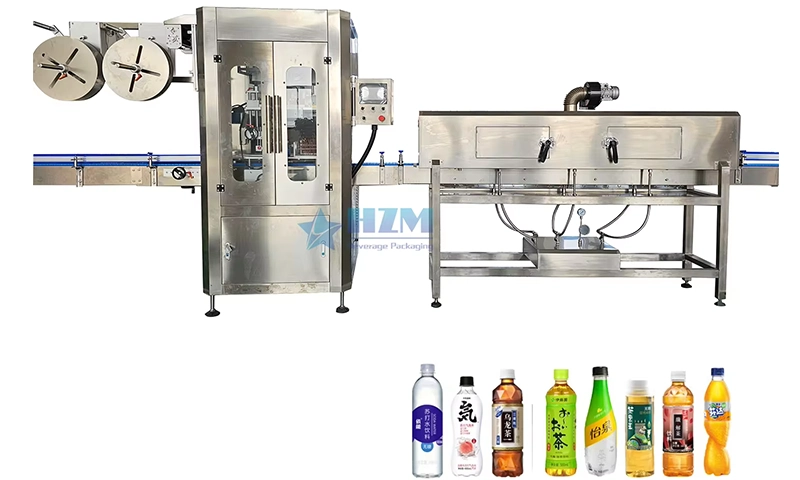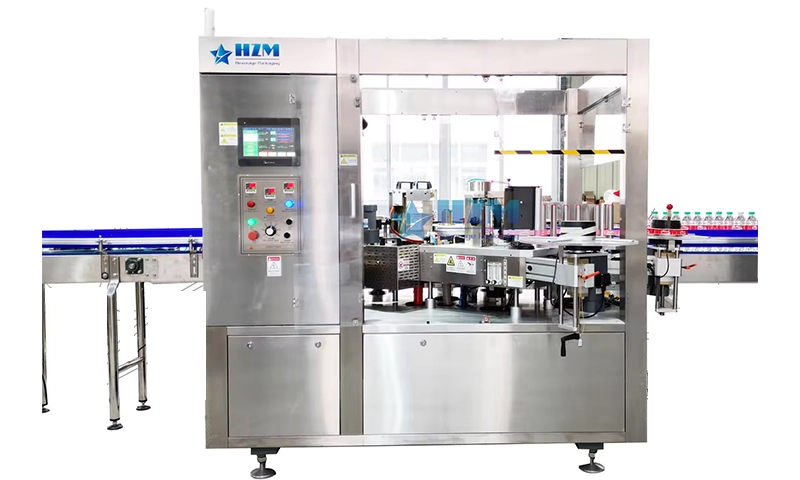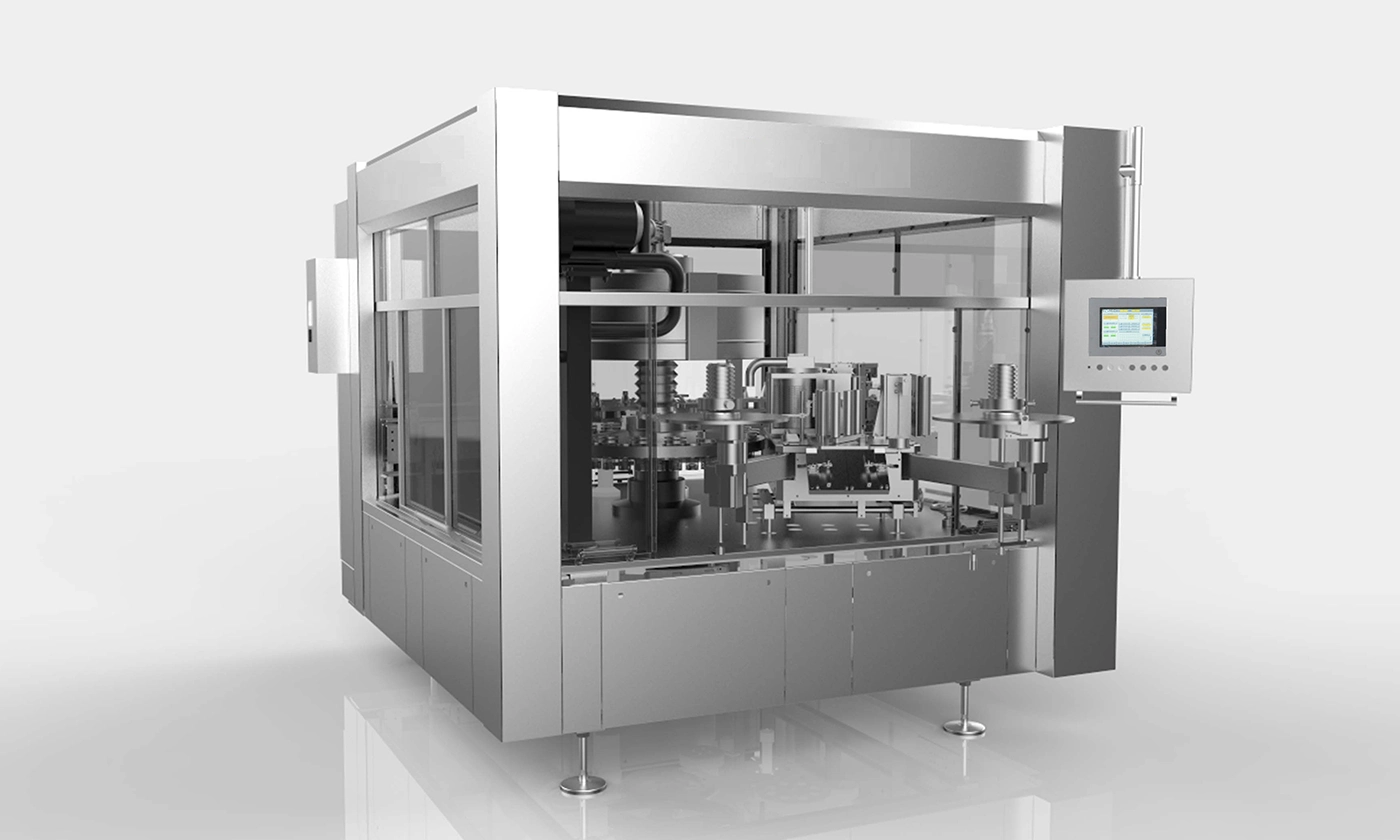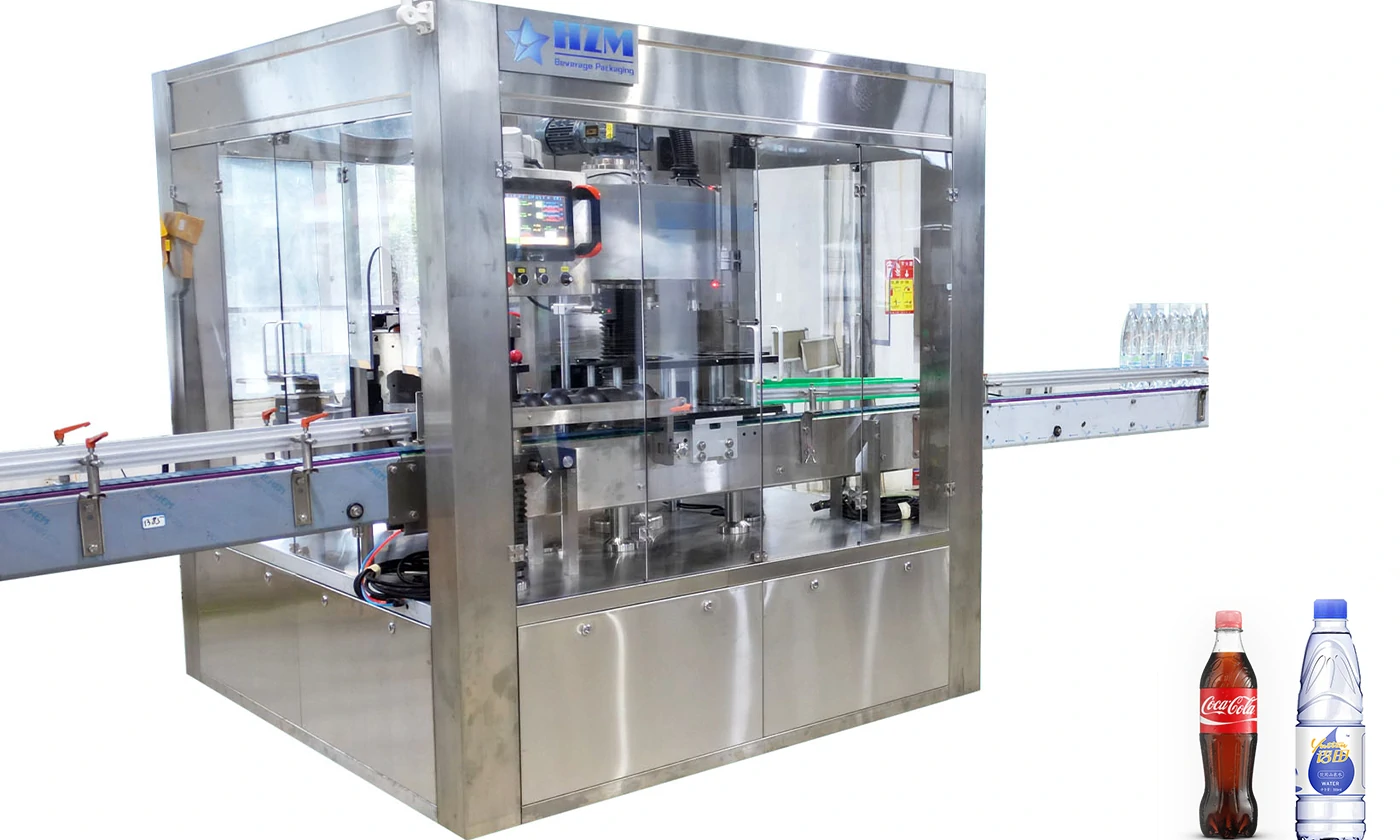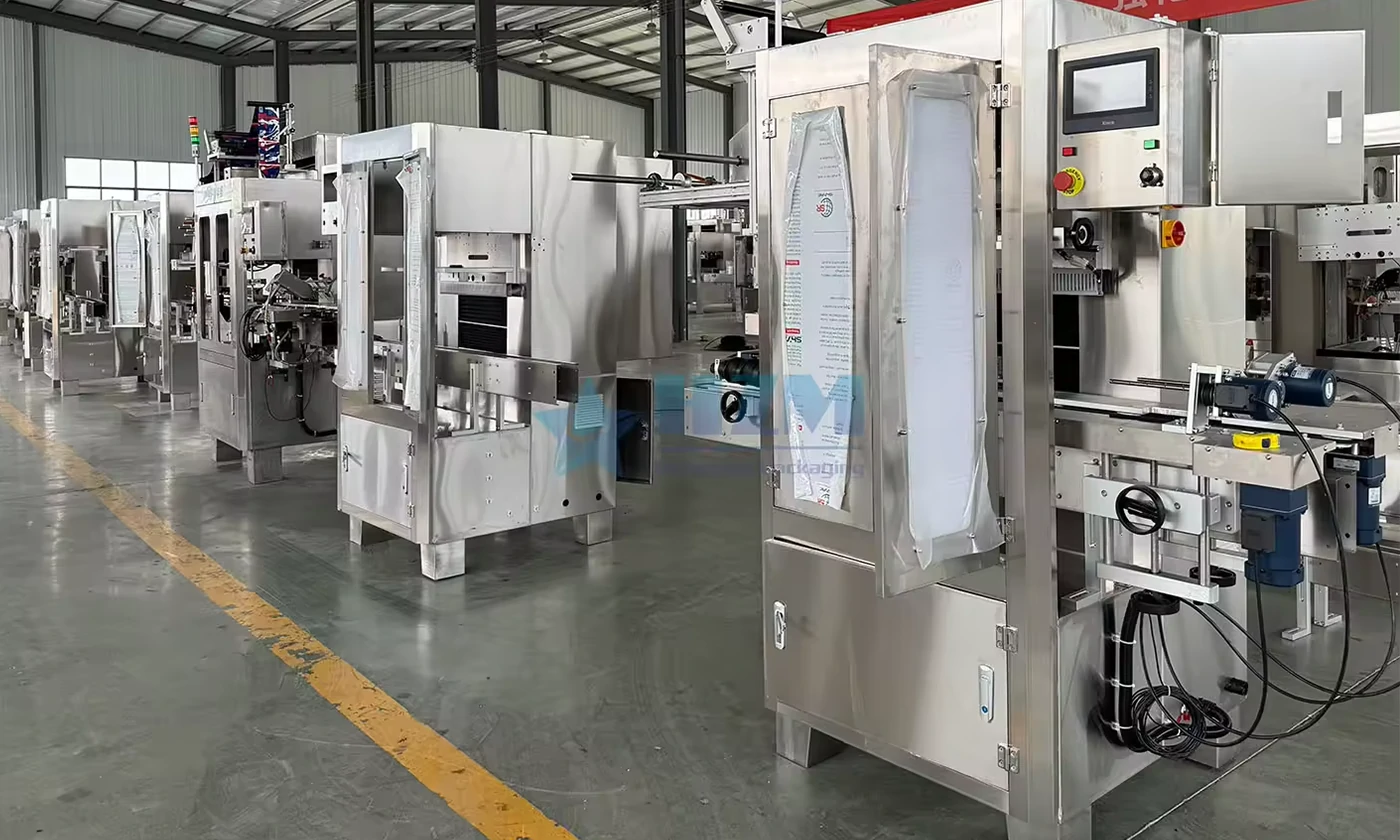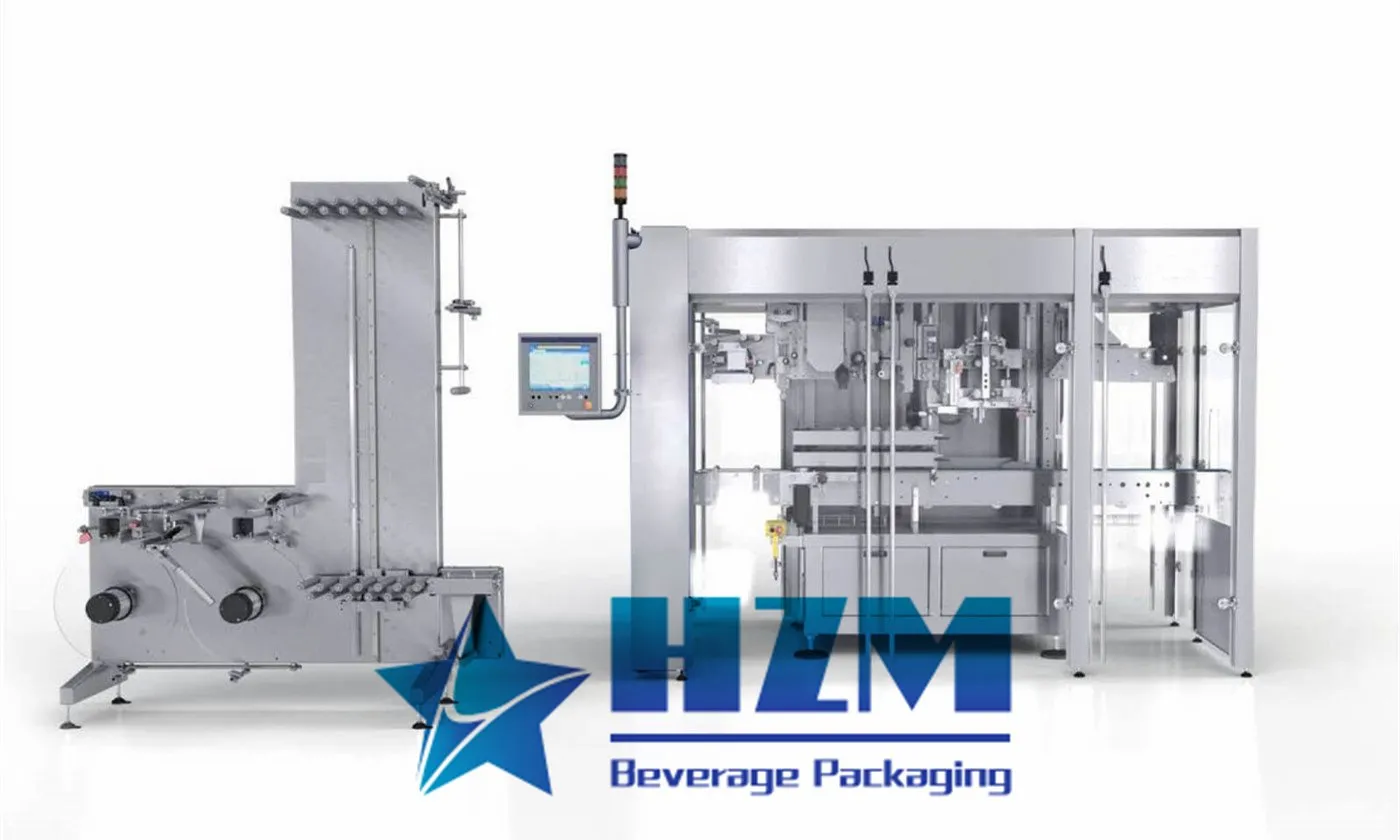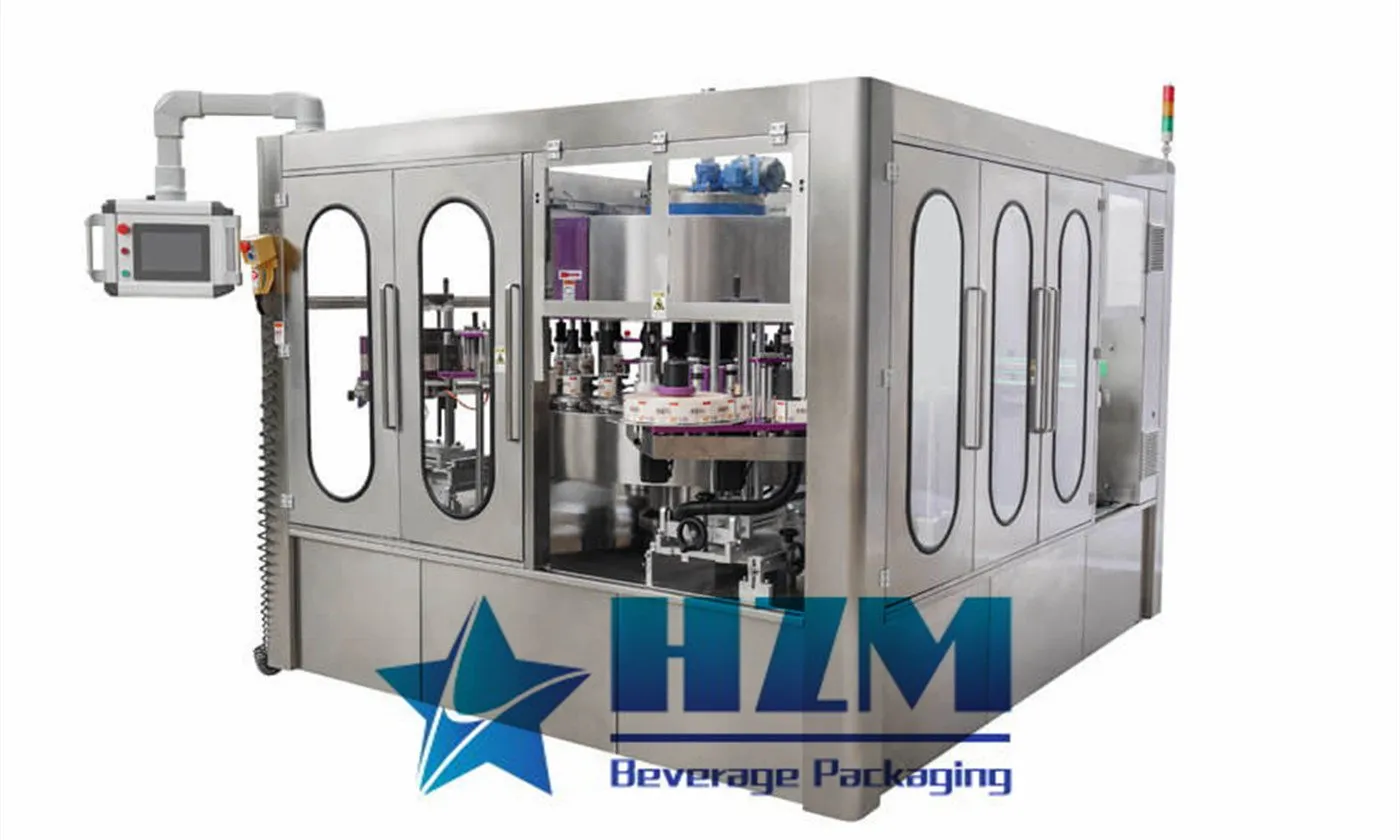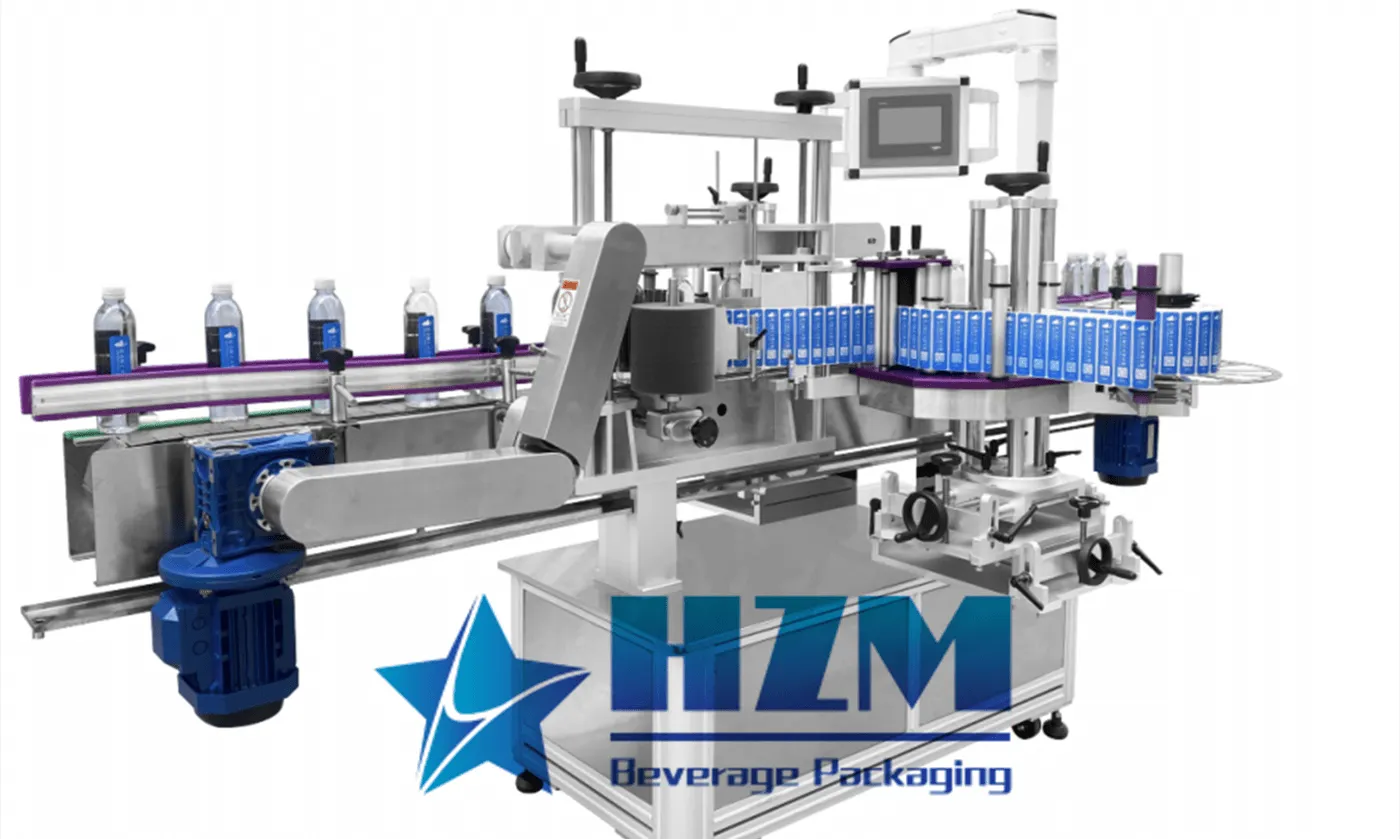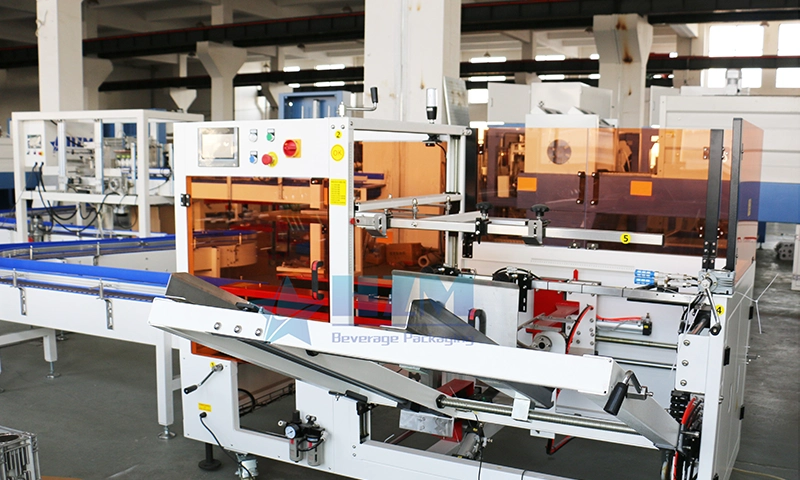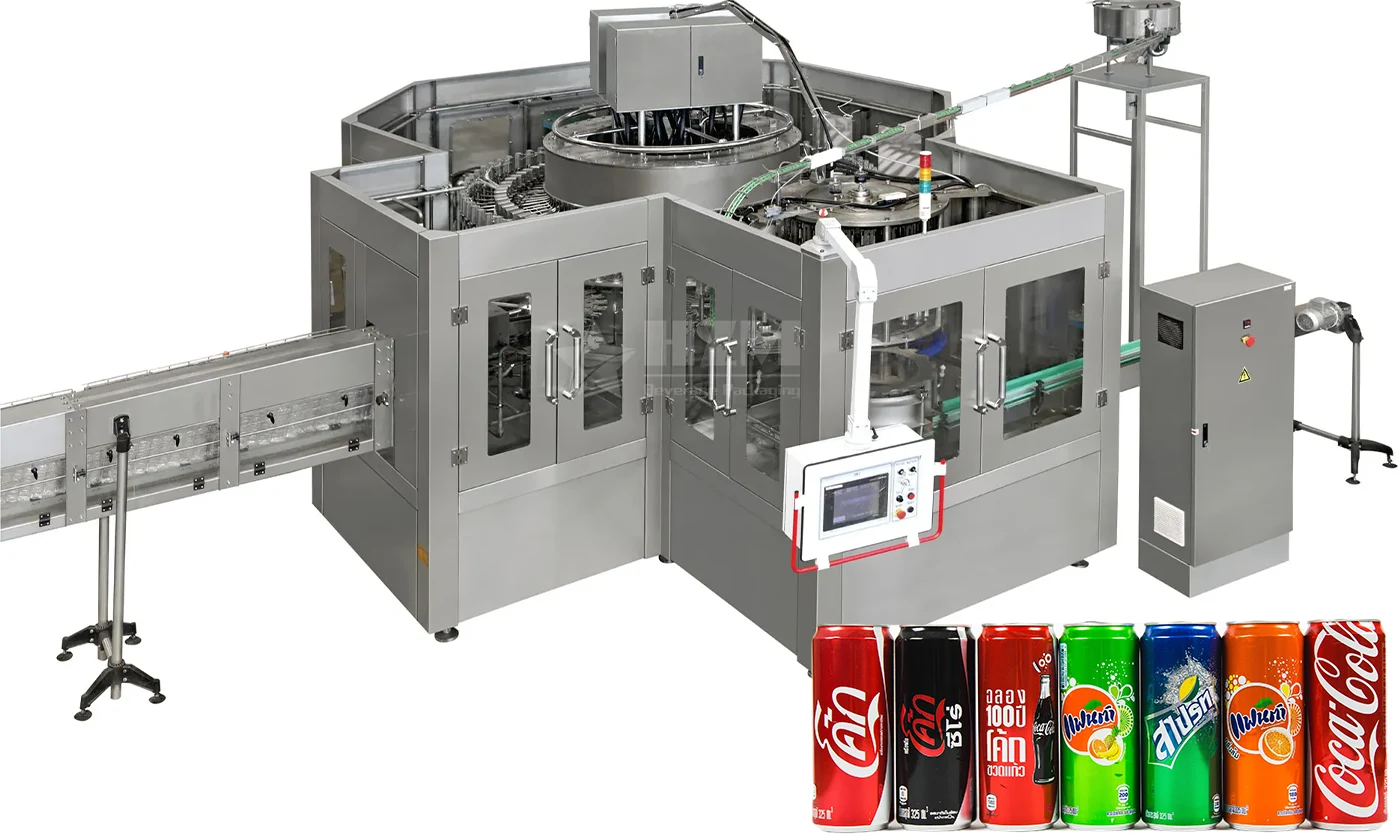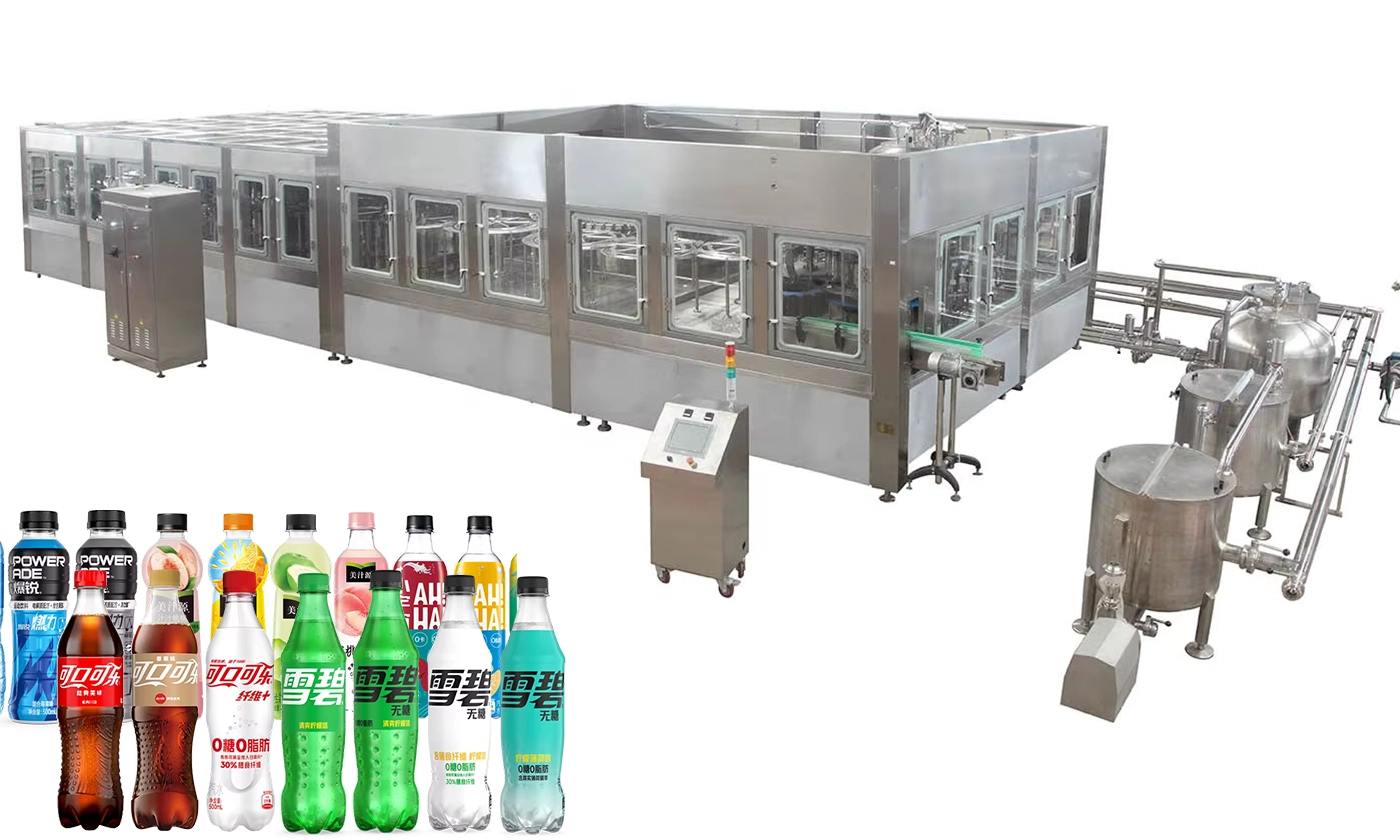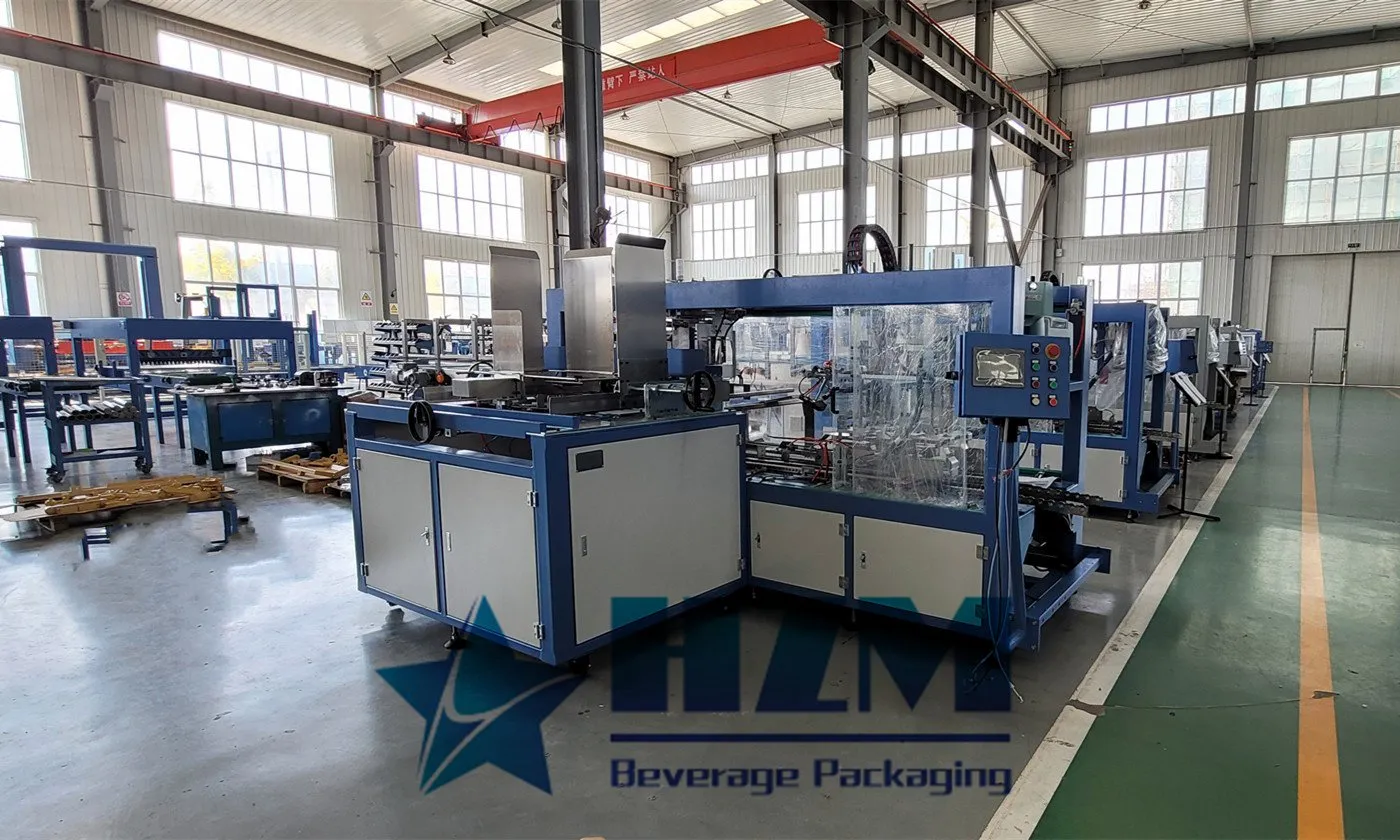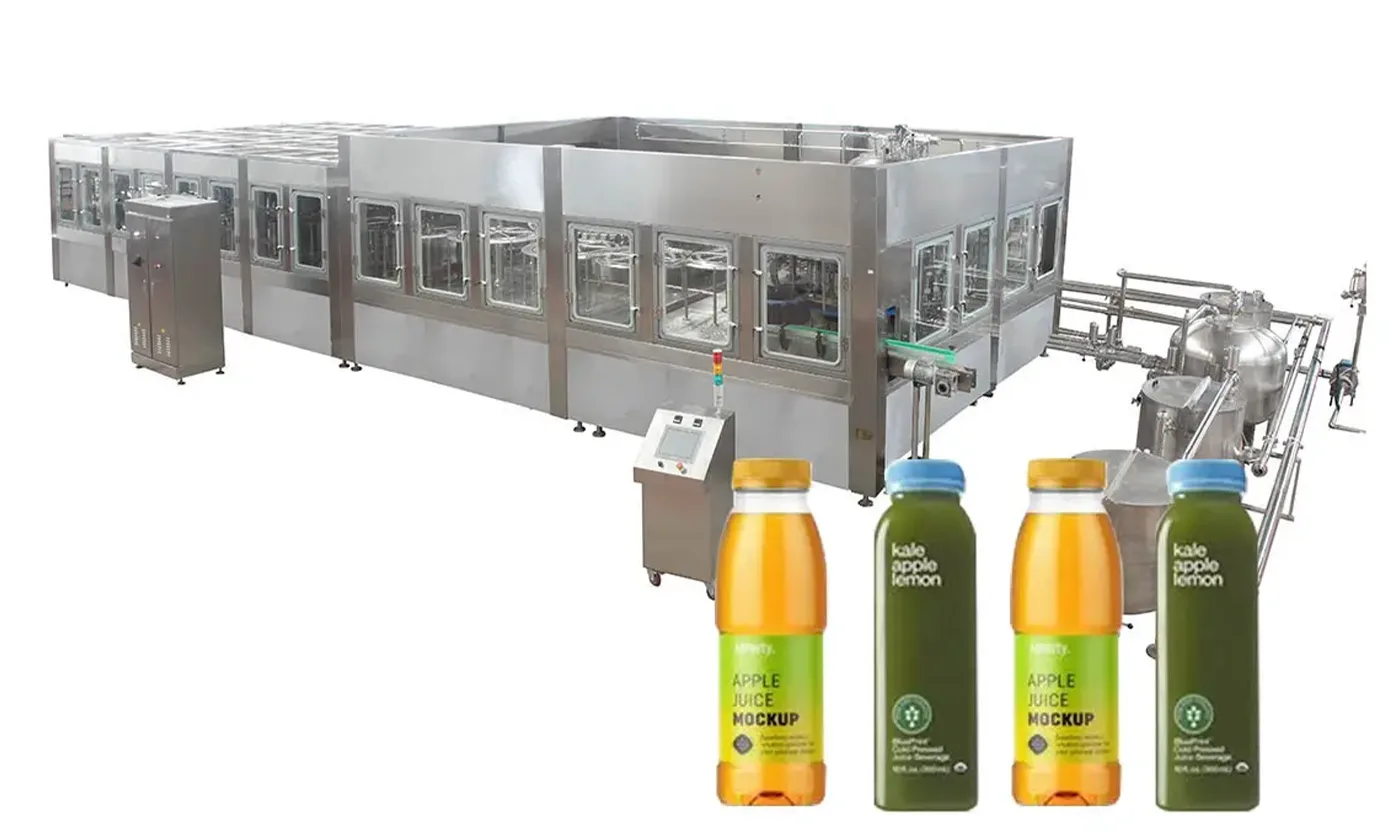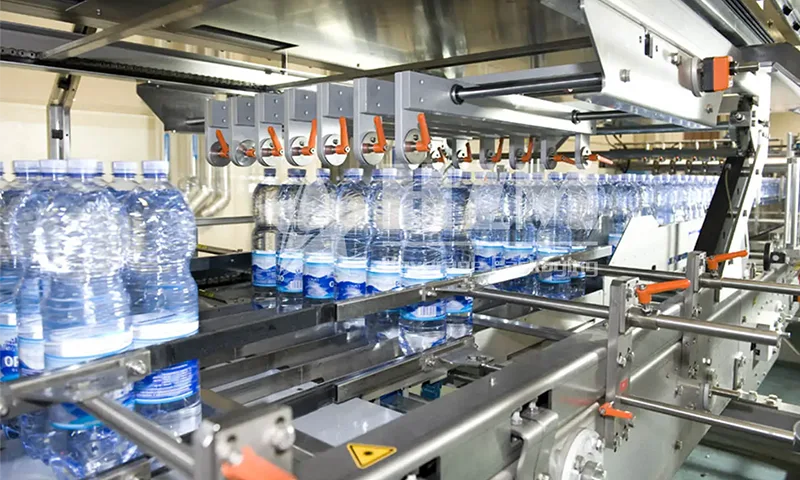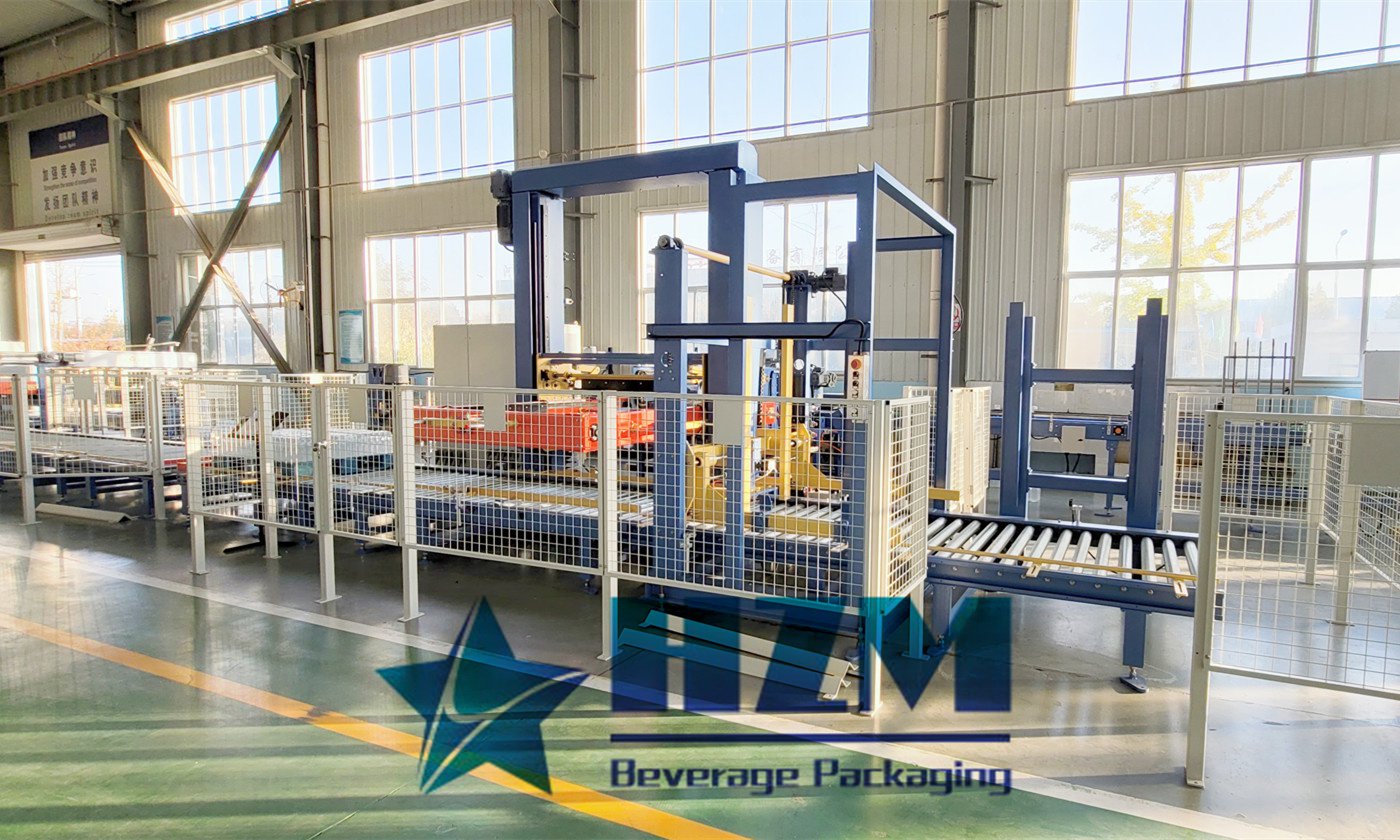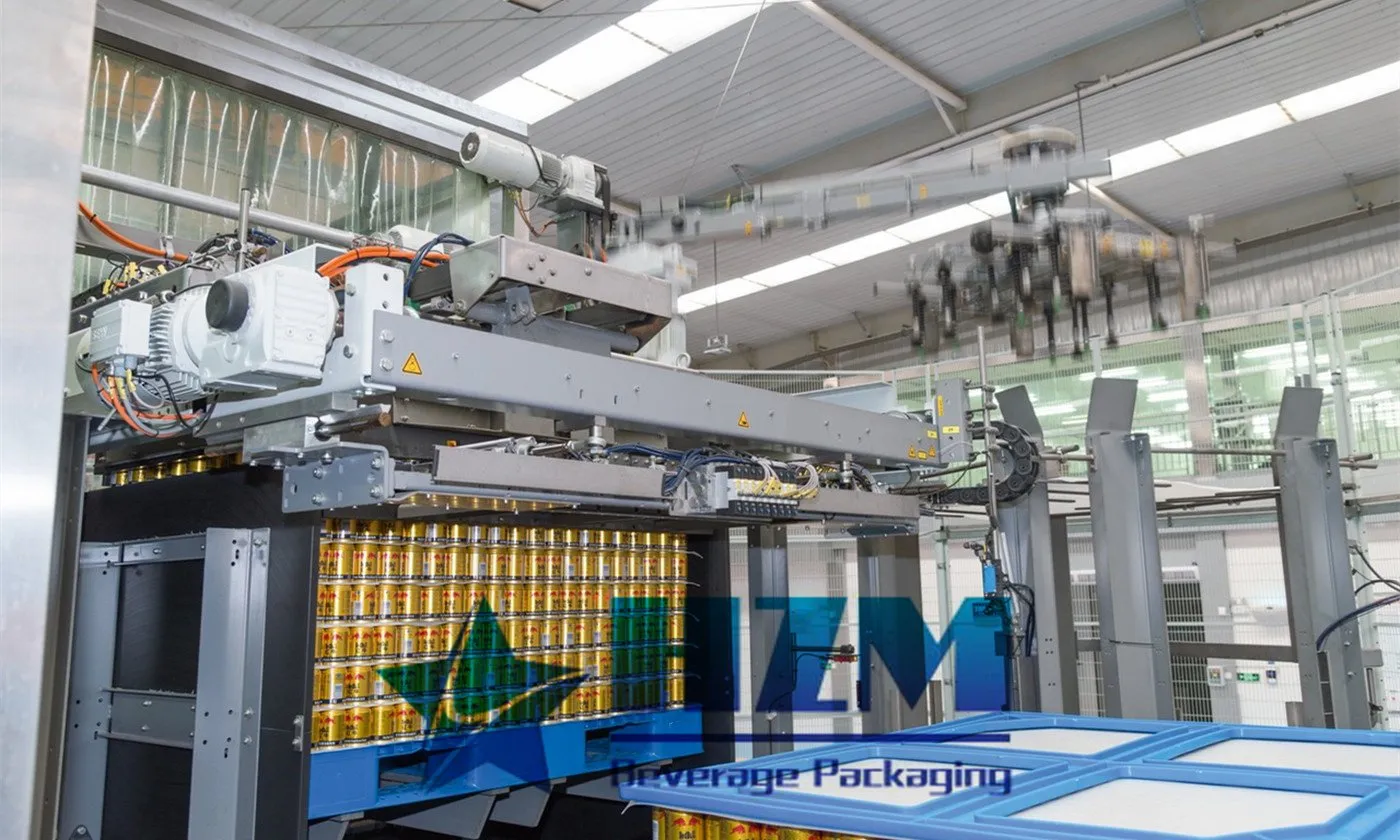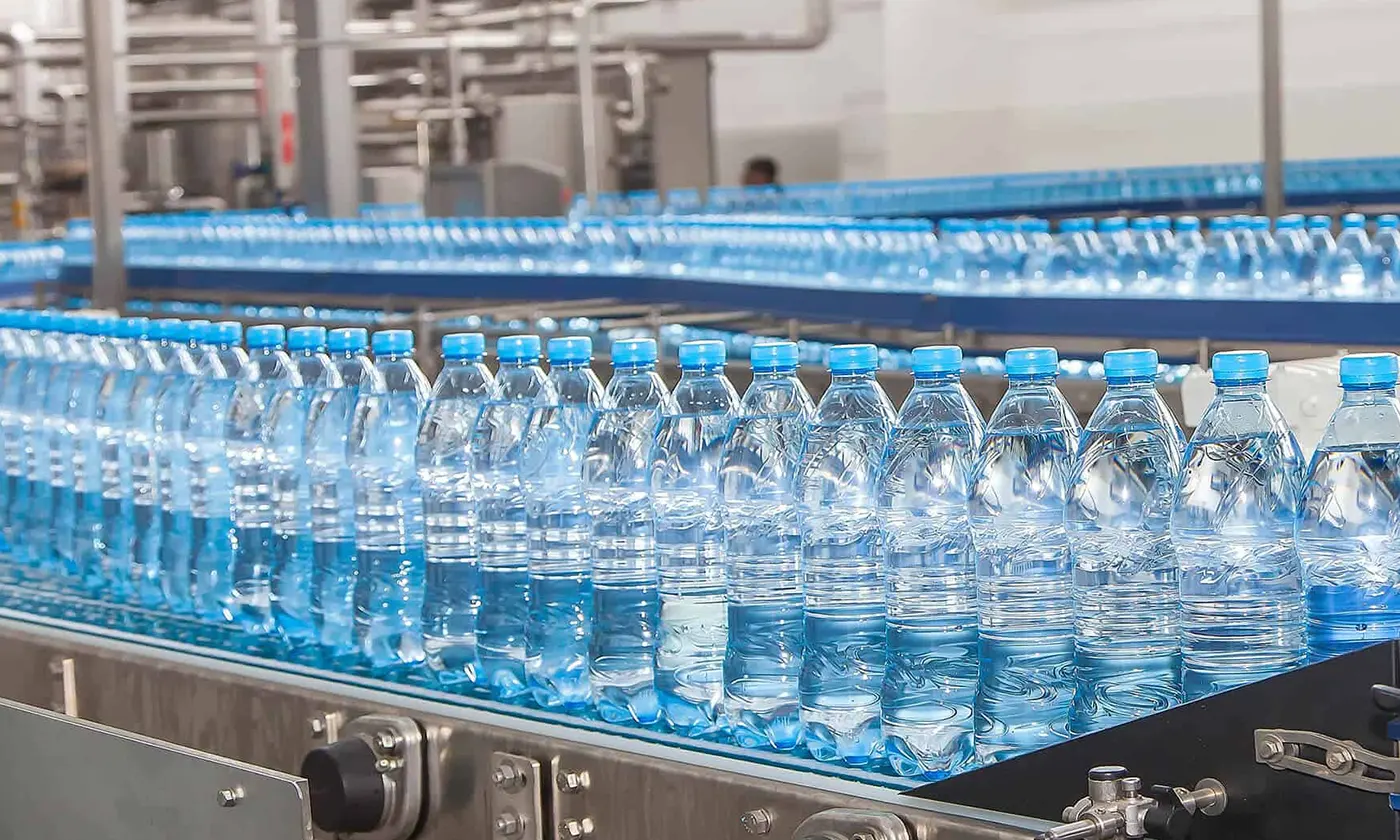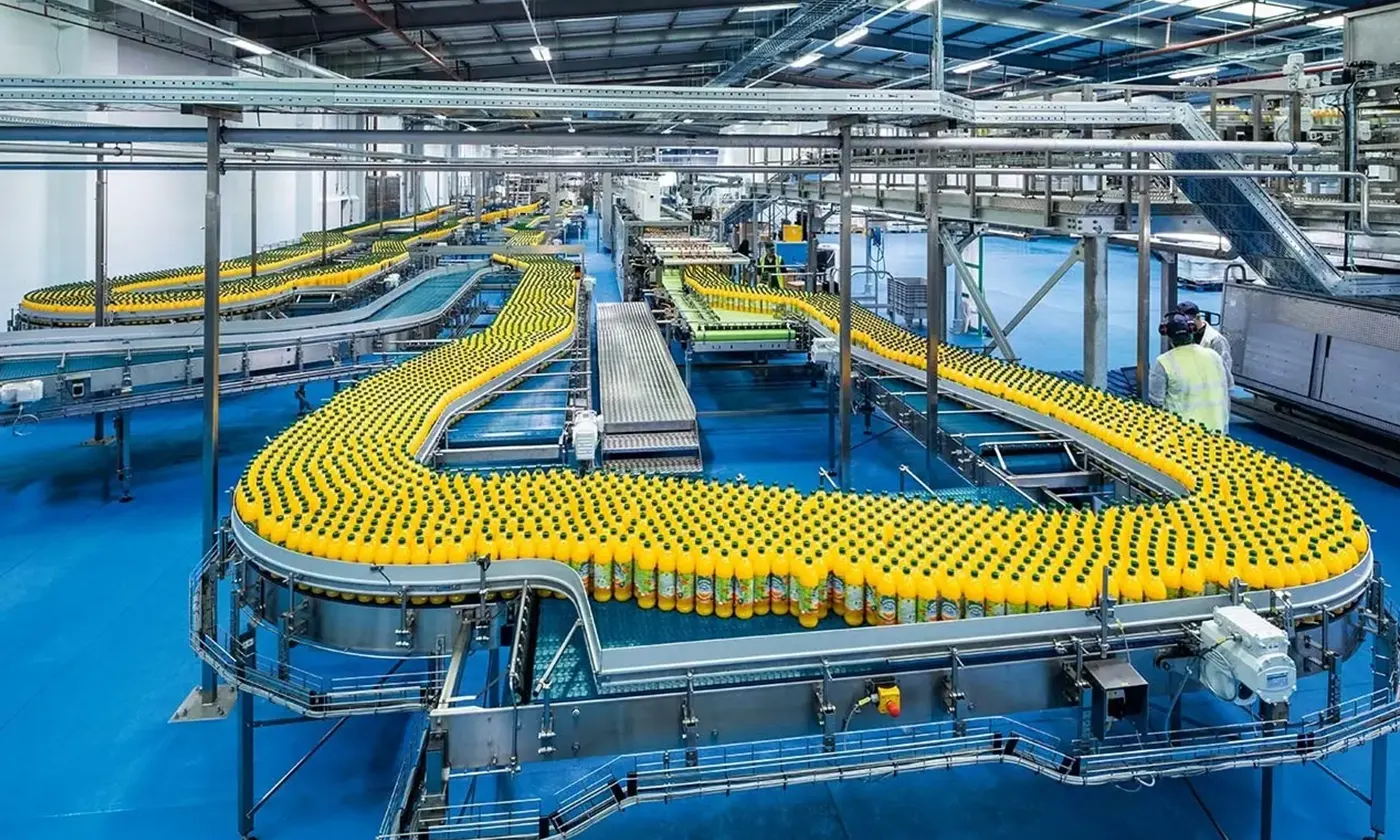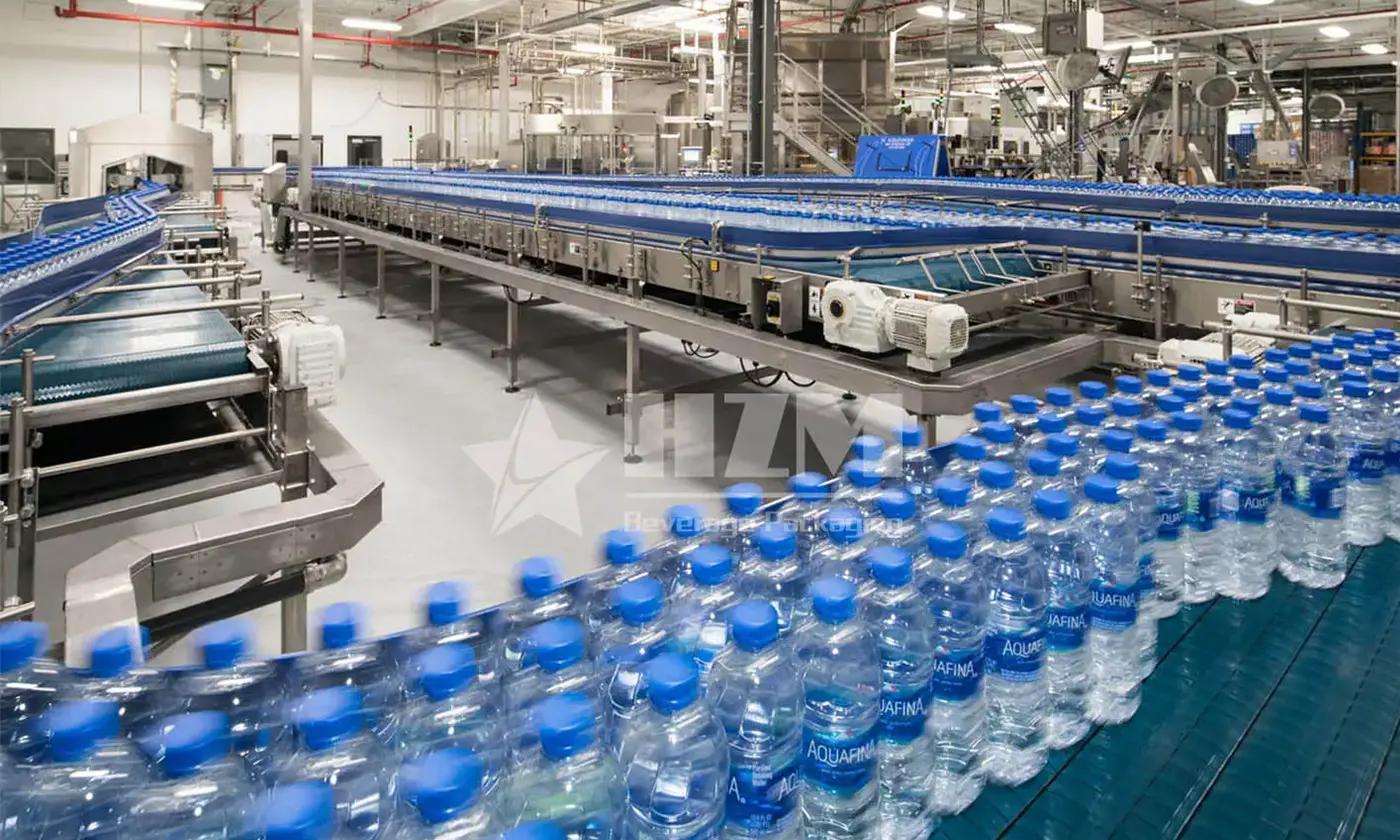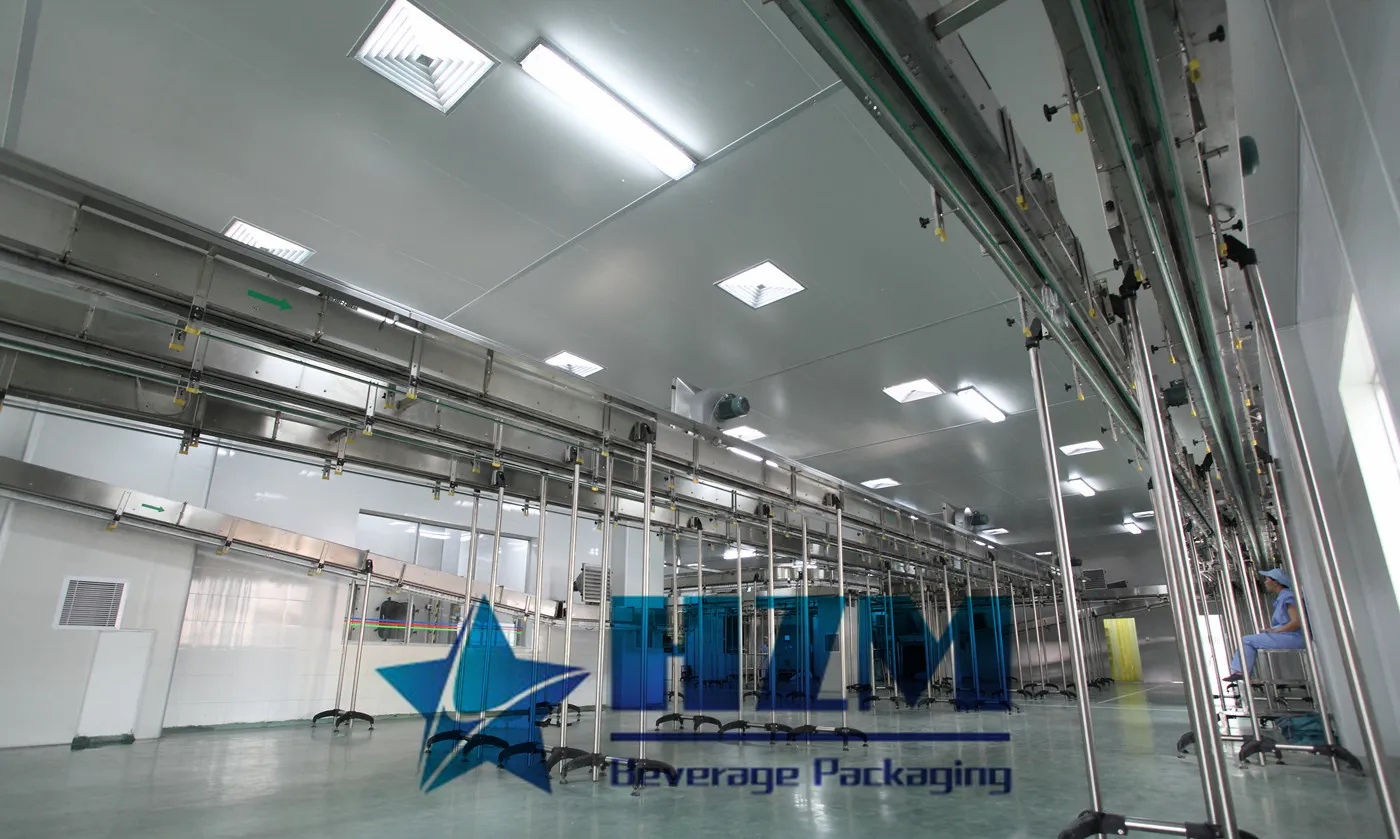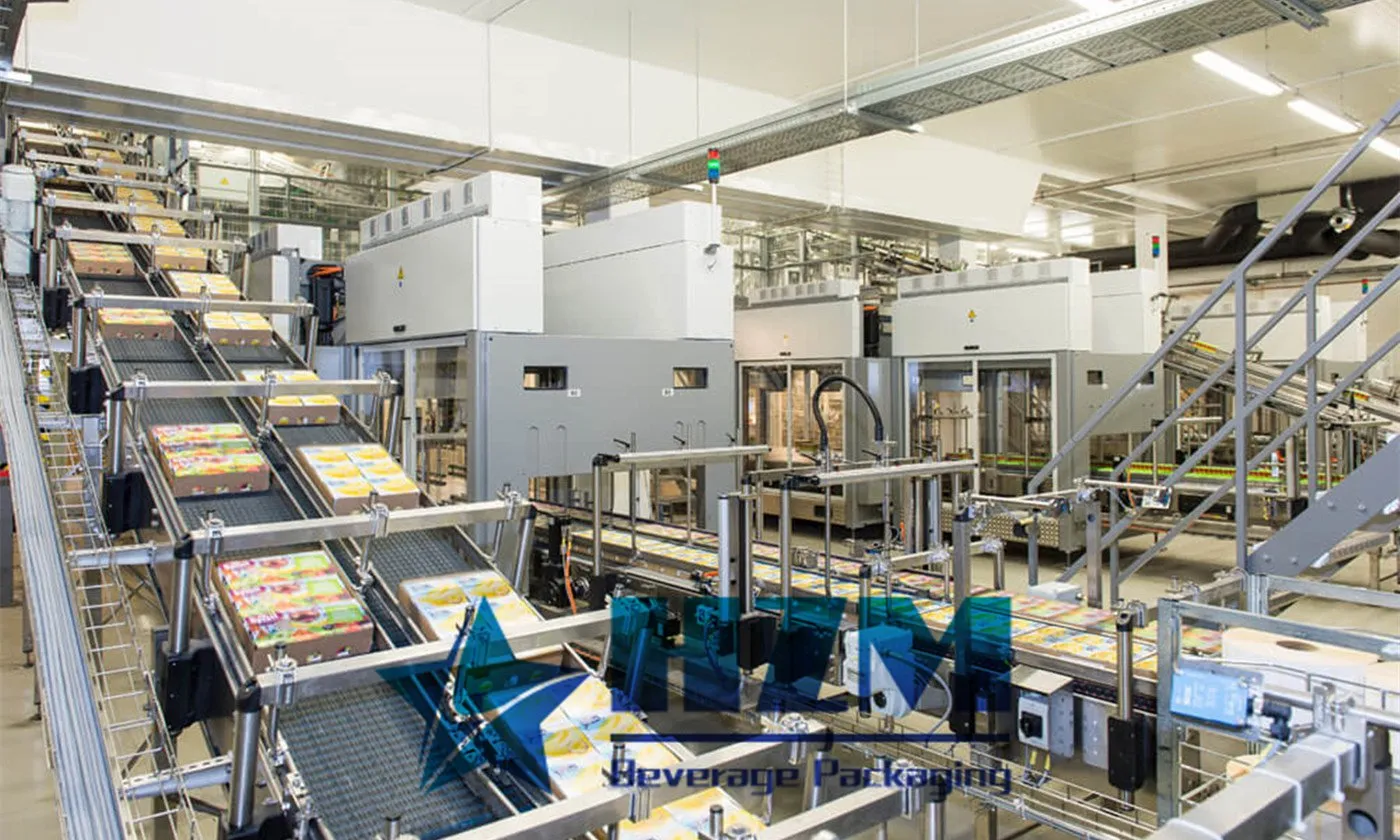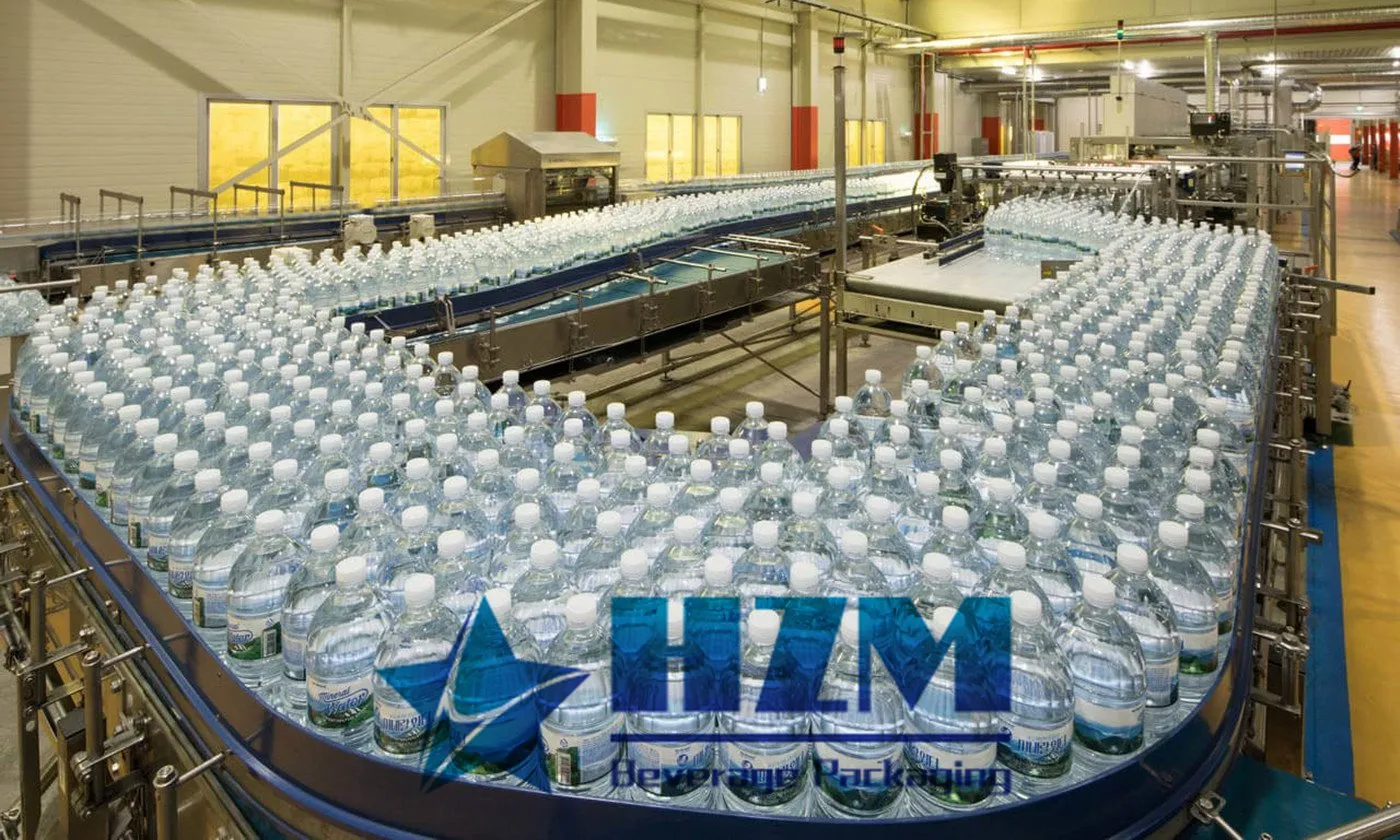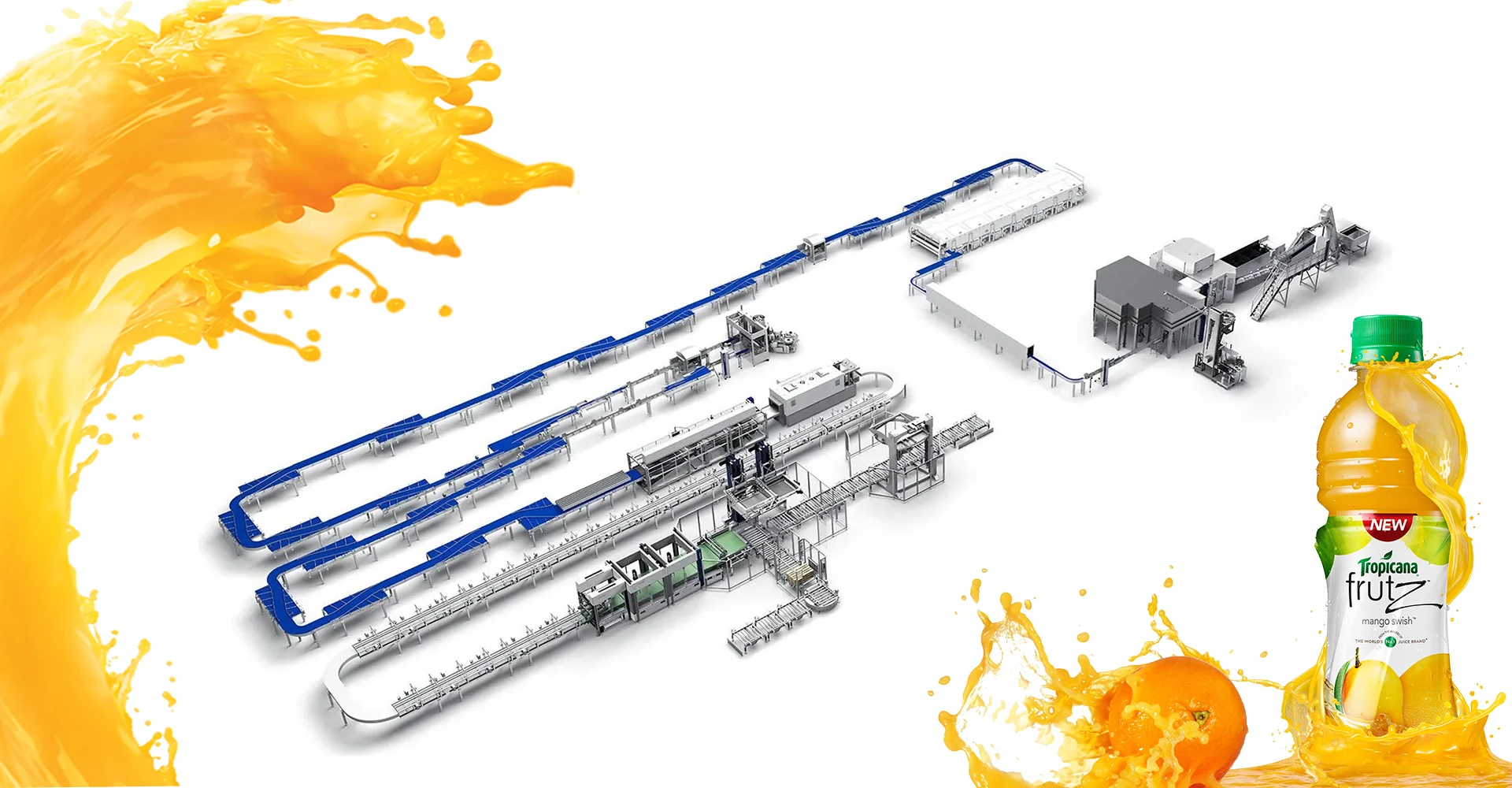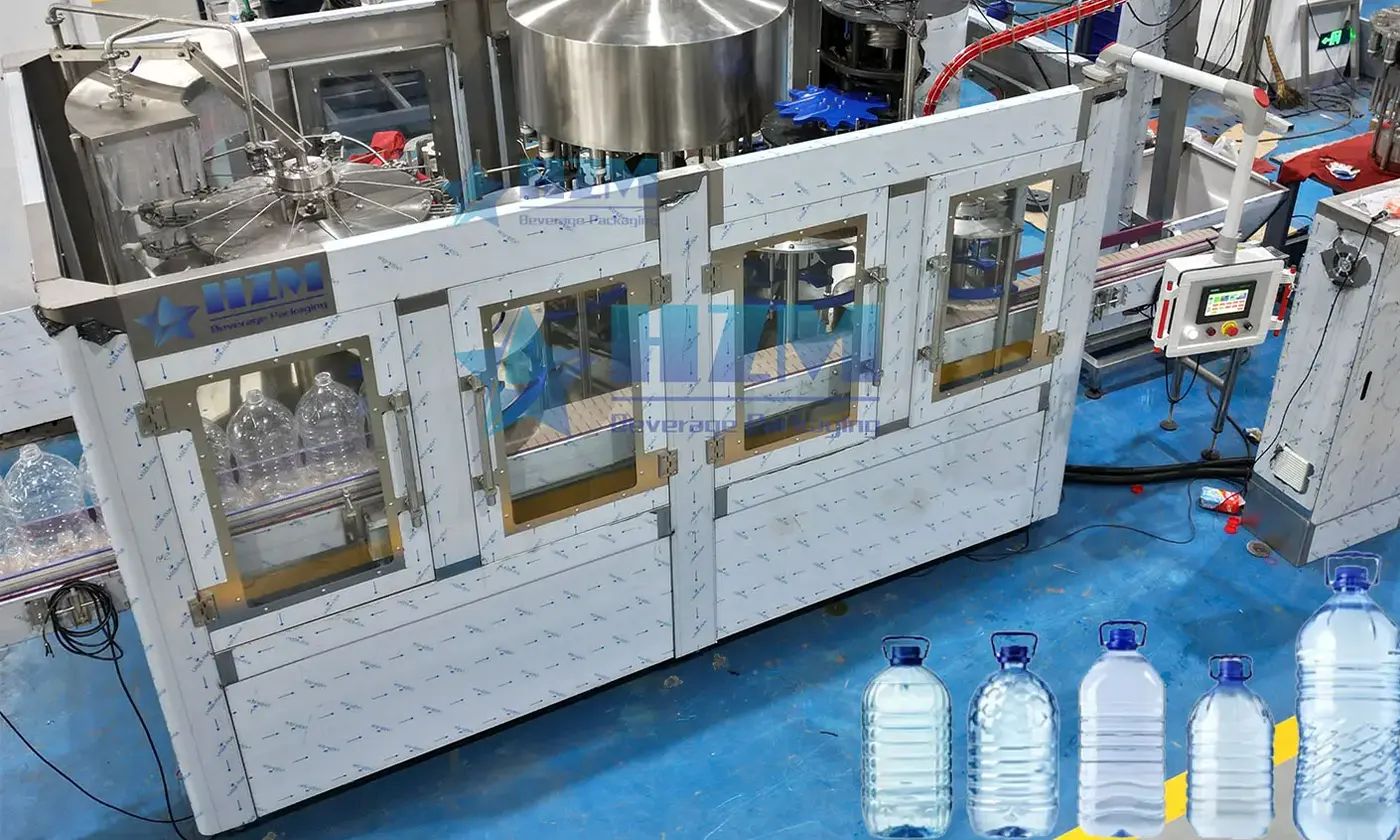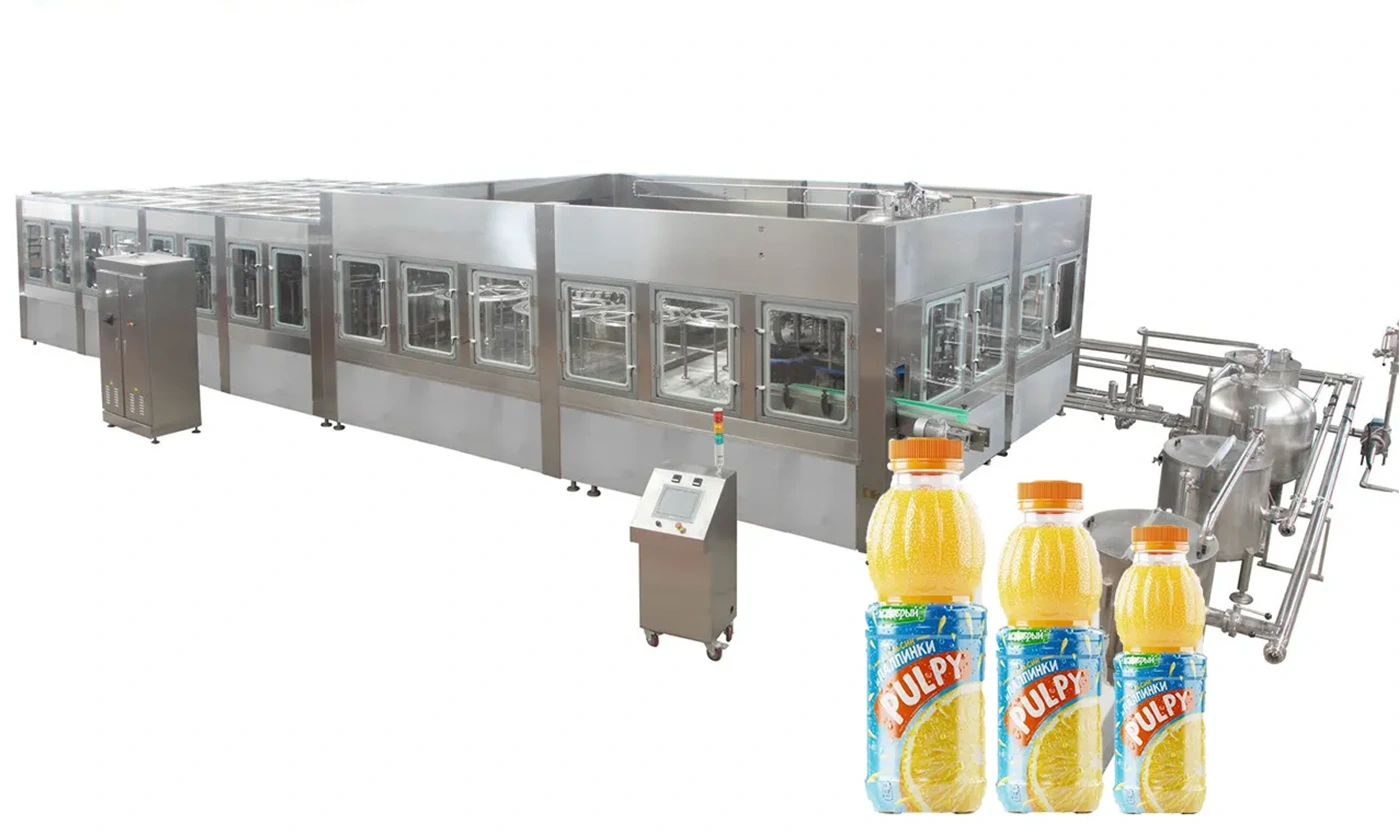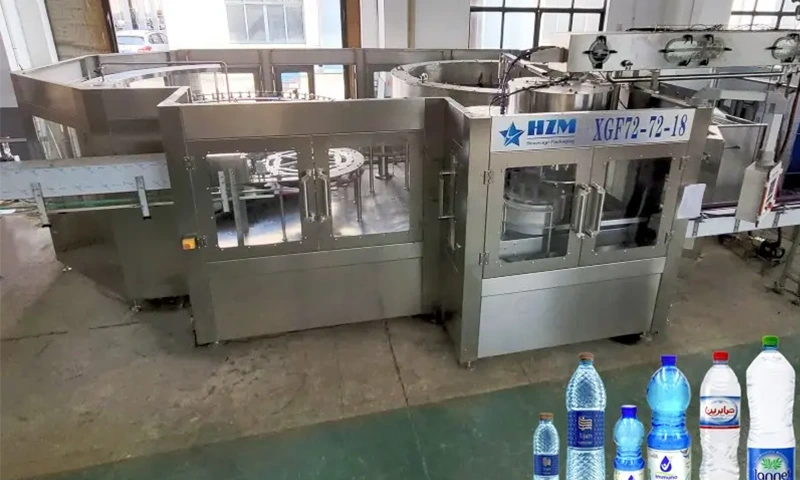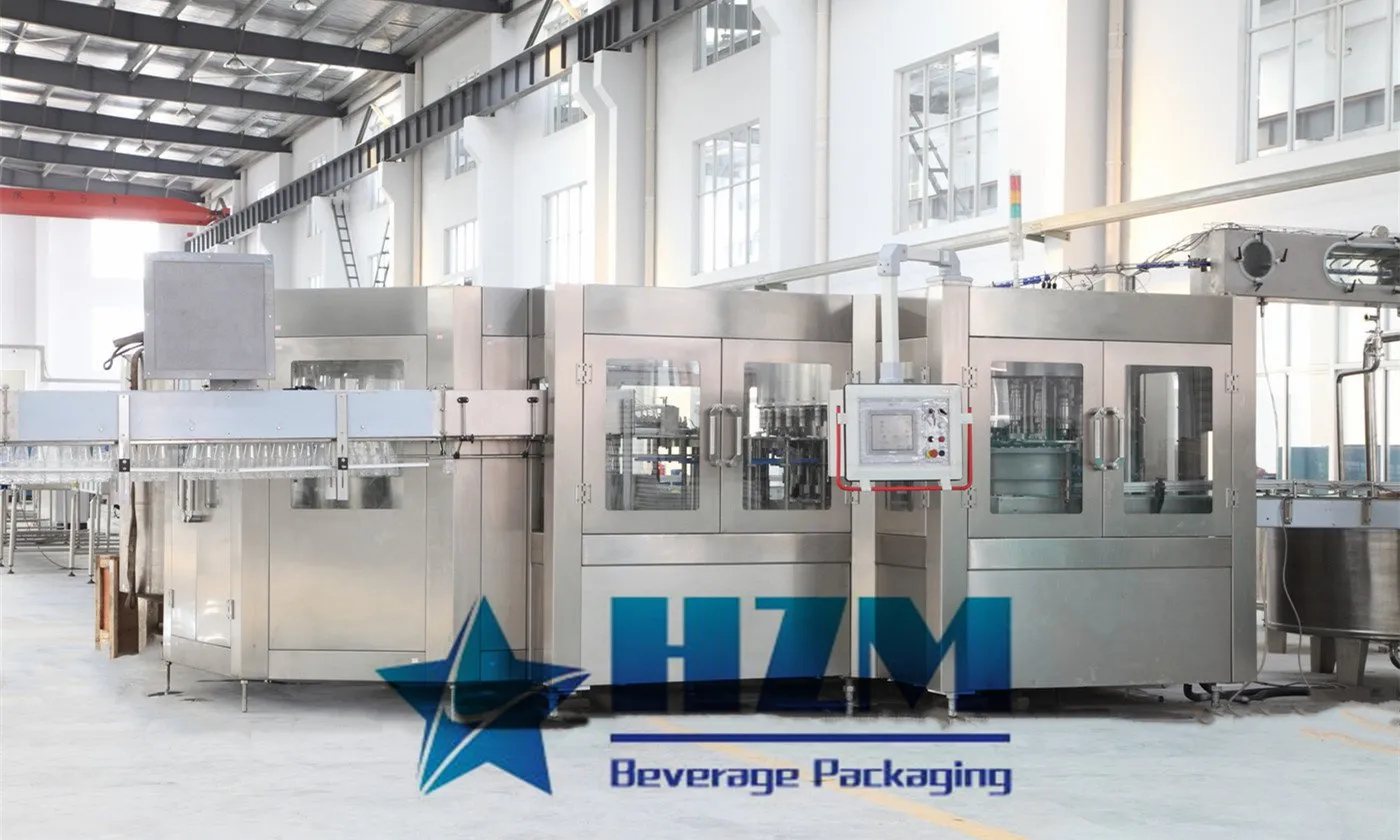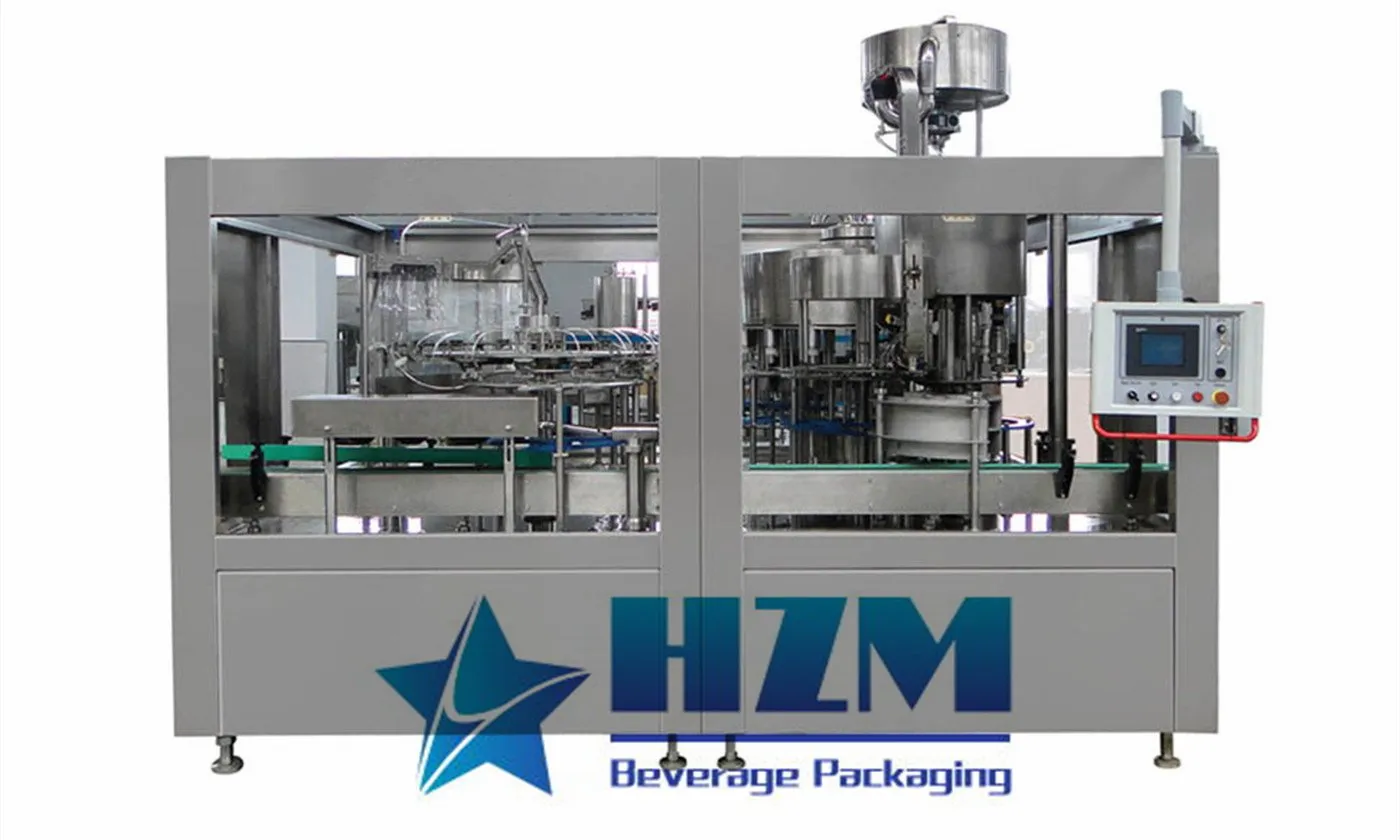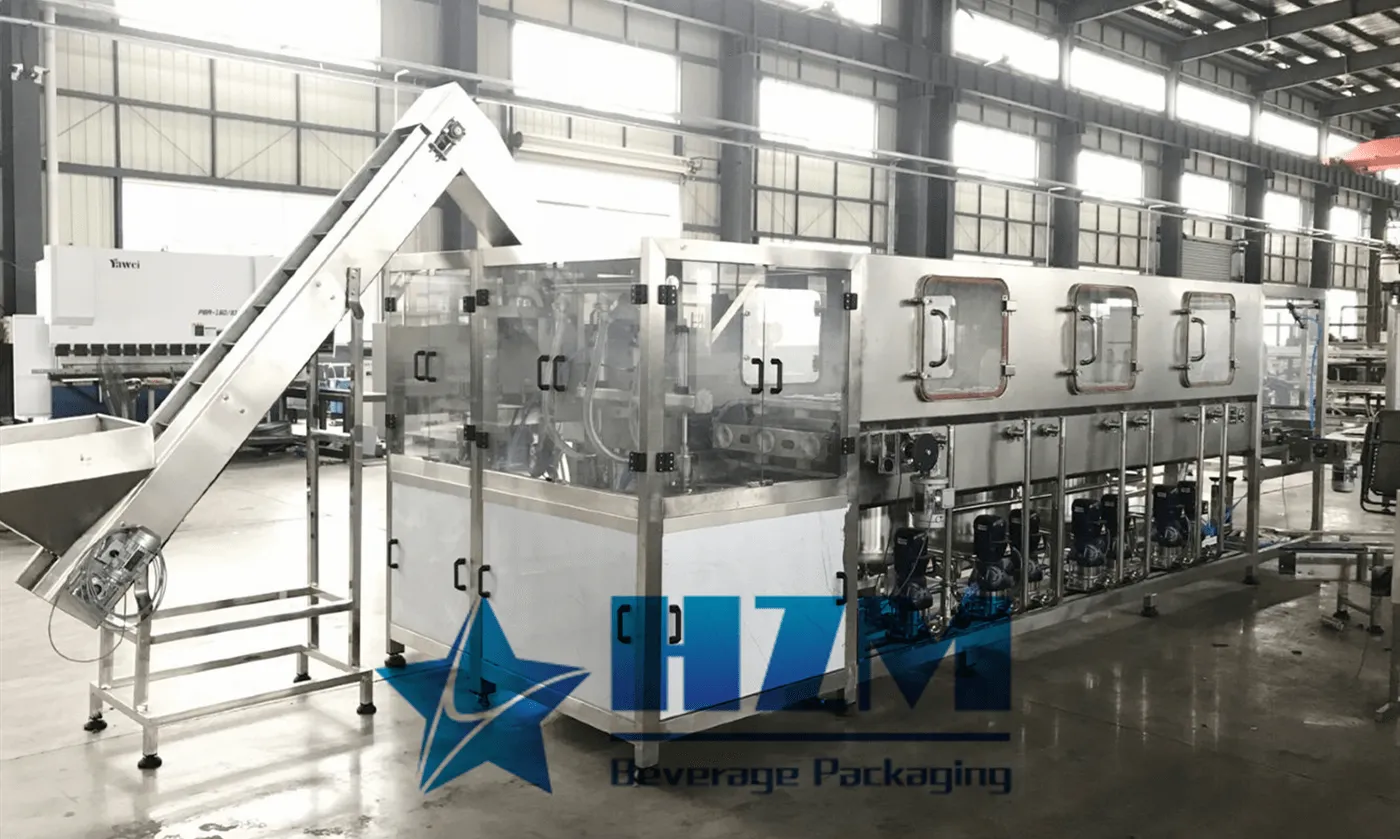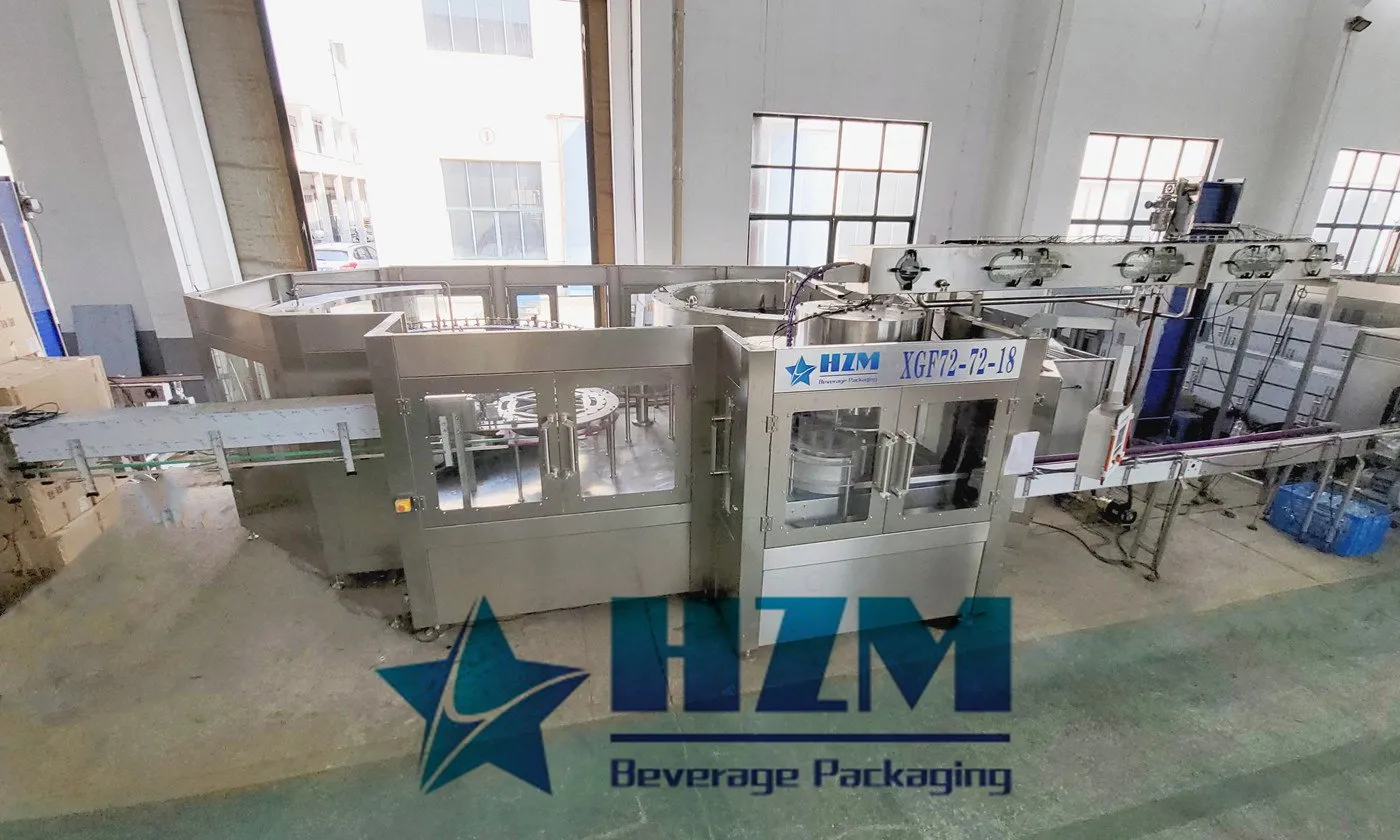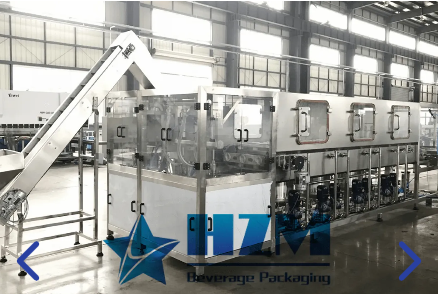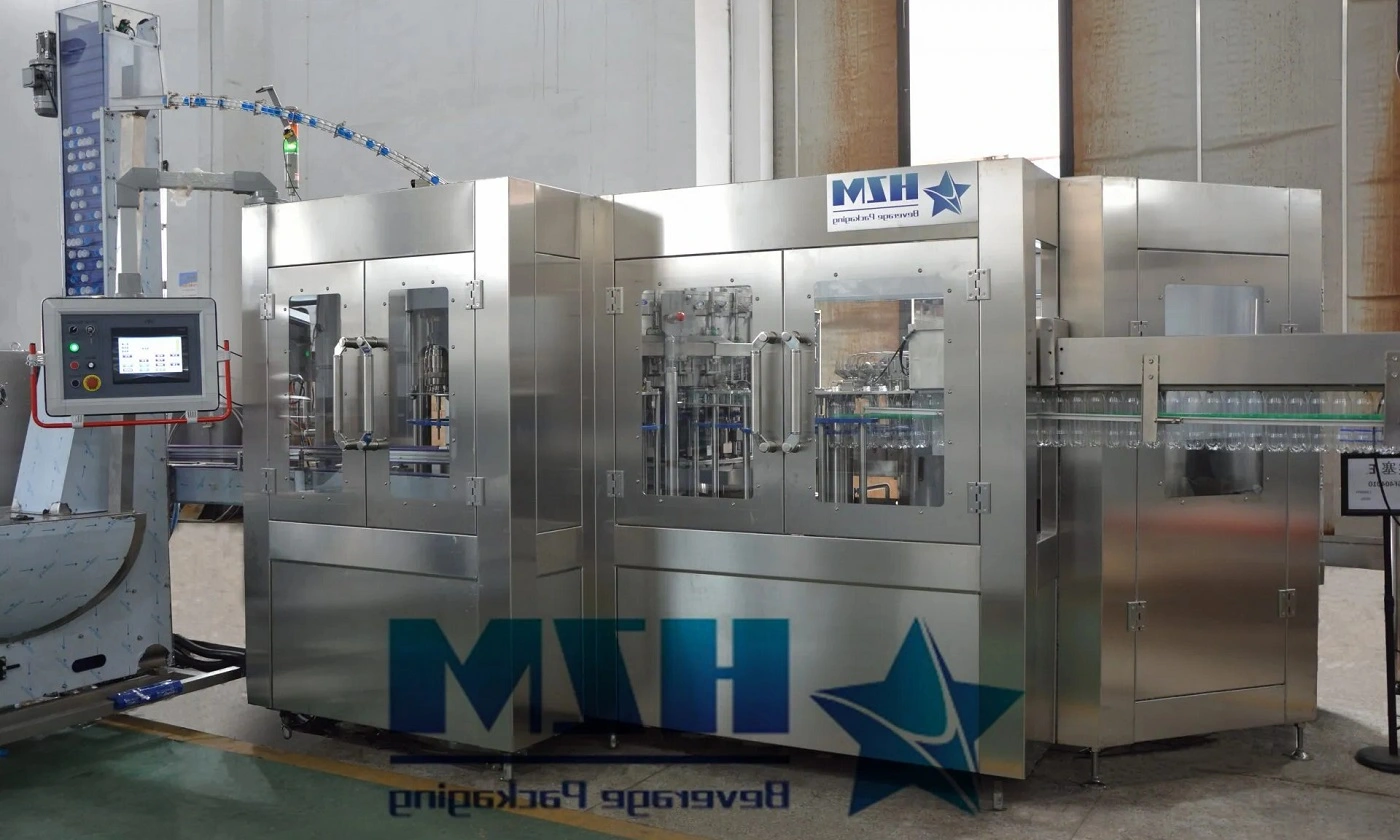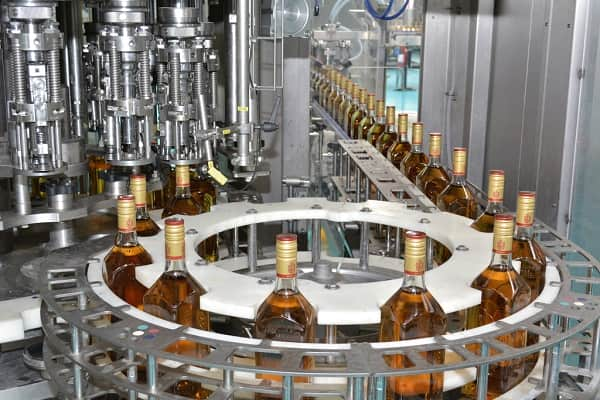Water Bottling Process Steps: Ensuring Quality and Purity
Bottled water has become a ubiquitous commodity worldwide, and its production involves a meticulous and highly controlled process to ensure its safety and quality. In this article, we will explore the comprehensive steps involved in the water bottling process, from source selection to packaging.
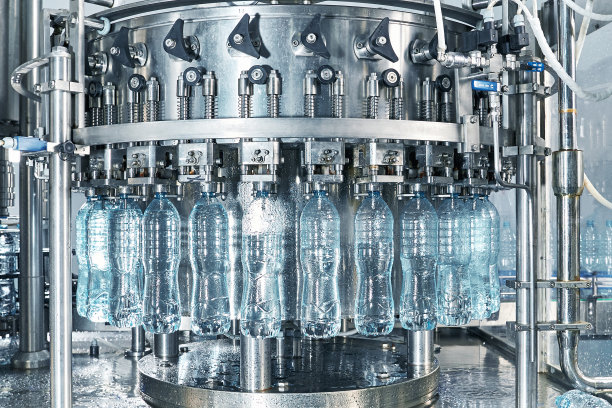
Robotic factory line for processing and bottling of pure spring water into canisters and bottles. Selective focus. Short depth of field. The conveyor is automatic.
1. Source Selection:
The foundation of high-quality bottled water begins with the selection of a pristine water source. The source must adhere to strict regulations and quality standards to ensure the water's purity. Sources can include natural springs, wells, or municipal water supplies.
2. Filtration and Treatment:
Once the water source is chosen, it undergoes a series of treatments to remove impurities and ensure its safety. Common treatments include:
- Filtration: Water is passed through various filters, like sand, charcoal, and micron filters, to remove particles, sediment, and larger contaminants.
- Ozonation or Chlorination: To disinfect the water and eliminate harmful microorganisms, ozone or chlorine is often added.
- Reverse Osmosis: This process removes dissolved minerals and further purifies the water by forcing it through a semipermeable membrane.
3. Quality Testing:
Regular quality testing is performed to ensure the water meets or exceeds the stringent purity and safety standards set by regulatory agencies. This includes testing for pH levels, total dissolved solids (TDS), microbiological contaminants, and chemical composition.
4. Water Storage:
After treatment and testing, the water is stored in sterile tanks to maintain its purity before bottling. These tanks are typically made of stainless steel to prevent contamination.
5. Bottle Production:
Bottles used for water packaging are manufactured separately and must meet strict quality standards. They are made from materials such as PET (polyethylene terephthalate) and are thoroughly cleaned and sterilized before use.
6. Bottle Filling:
The water is then transferred from storage tanks to the bottling line, where bottles are filled using one of the following methods:
- Gravity Filling: Involves allowing the water to flow into the bottles using gravity. It's a gentle method suitable for still water.
- Pressure Filling: Applicable for carbonated water, this method pressurizes the bottle before filling to prevent the loss of carbonation.
7. Cap Placement and Sealing:
Once filled, caps are placed on the bottles, and sealing mechanisms secure them in place. Tamper-evident seals are often used to ensure product integrity.
8. Labeling and Coding:
Labels with essential information like brand name, nutritional facts, and expiration dates are applied to the bottles. Additionally, coding machines may be used to imprint batch numbers or production dates.
9. Inspection:
Automated systems inspect the bottles for defects, including cap integrity, fill levels, and label placement. Any substandard bottles are removed from the production line.
10. Packaging:
Bottles are packed into cases or trays, ready for distribution. The packaging process ensures that the bottles remain intact and secure during transportation.
11. Quality Control:
Even after packaging, random samples are regularly tested for quality and safety to maintain the highest standards.
12. Distribution:
The final product is shipped to retailers, wholesalers, or directly to consumers, ensuring that bottled water remains readily available to meet demand.
Conclusion:
The water bottling process is a complex and highly regulated operation that guarantees the delivery of safe and high-quality bottled water to consumers worldwide. Every step in this process is critical to maintaining the purity and integrity of the product, making bottled water a trusted source of hydration for millions of people.
TAG: Water Bottling Process Steps Water Filling Machine
-
![Automatic PET Bottle Blowing Filling Capping Machine – Best price beverage machinery]() Automatic PET Bottle Blowing Filling Capping Machine – Best price beverage machinery
Automatic PET Bottle Blowing Filling Capping Machine – Best price beverage machinery -
![Drinking water production line – Bottled Water Filling Machine Manufacturer]() Drinking water production line – Bottled Water Filling Machine Manufacturer
Drinking water production line – Bottled Water Filling Machine Manufacturer -
![Beverage Filling Line – Juice, Water, Soft Drinks, cola, Beer]() Beverage Filling Line – Juice, Water, Soft Drinks, cola, Beer
Beverage Filling Line – Juice, Water, Soft Drinks, cola, Beer -
![Automatic Pure Water Bottling Filling Machine]() Automatic Pure Water Bottling Filling Machine
Automatic Pure Water Bottling Filling Machine -
![Fully Automatic Beverage Filling Machine]() Fully Automatic Beverage Filling Machine
Fully Automatic Beverage Filling Machine -
![3-In-1 Water Bottle Filling Machine]() 3-In-1 Water Bottle Filling Machine
3-In-1 Water Bottle Filling Machine -
![PET Bottle Water Filling Machine]() PET Bottle Water Filling Machine
PET Bottle Water Filling Machine -
![3-10L Big PET Bottle Water Filling Machine]() 3-10L Big PET Bottle Water Filling Machine
3-10L Big PET Bottle Water Filling Machine -
![3-5 Gallon Water Filling Line]() 3-5 Gallon Water Filling Line
3-5 Gallon Water Filling Line -
![Automatic Water Bottle Filling Machine]() Automatic Water Bottle Filling Machine
Automatic Water Bottle Filling Machine
-
![Automatic PET Bottle Blowing Filling Capping Machine – Best price beverage machinery]() Automatic PET Bottle Blowing Filling Capping Machine – Best price beverage machineryOct , 24 /2025
Automatic PET Bottle Blowing Filling Capping Machine – Best price beverage machineryOct , 24 /2025 -
![Drinking water production line – Bottled Water Filling Machine Manufacturer]() Drinking water production line – Bottled Water Filling Machine ManufacturerSep , 11 /2025
Drinking water production line – Bottled Water Filling Machine ManufacturerSep , 11 /2025 -
![Beverage Filling Line – Juice, Water, Soft Drinks, cola, Beer]() Beverage Filling Line – Juice, Water, Soft Drinks, cola, BeerJul , 21 /2025
Beverage Filling Line – Juice, Water, Soft Drinks, cola, BeerJul , 21 /2025 -
![Automatic Pure Water Bottling Filling Machine]() Automatic Pure Water Bottling Filling MachineDec , 21 /2023
Automatic Pure Water Bottling Filling MachineDec , 21 /2023 -
![Fully Automatic Beverage Filling Machine]() Fully Automatic Beverage Filling MachineOct , 11 /2023
Fully Automatic Beverage Filling MachineOct , 11 /2023 -
![3-In-1 Water Bottle Filling Machine]() 3-In-1 Water Bottle Filling MachineOct , 10 /2023
3-In-1 Water Bottle Filling MachineOct , 10 /2023 -
![Unveiling the Precision and Efficiency of Water Filling Machines]() Unveiling the Precision and Efficiency of Water Filling MachinesMar , 24 /2023
Unveiling the Precision and Efficiency of Water Filling MachinesMar , 24 /2023 -
![Soft Drinks Sparkling Water Filling Machine: A Comprehensive Guide]() Soft Drinks Sparkling Water Filling Machine: A Comprehensive GuideApr , 26 /2023
Soft Drinks Sparkling Water Filling Machine: A Comprehensive GuideApr , 26 /2023 -
![Leading Manufacturer of Mineral Water Filling Machines]() Leading Manufacturer of Mineral Water Filling MachinesMay , 27 /2023
Leading Manufacturer of Mineral Water Filling MachinesMay , 27 /2023 -
![Your Trusted Manufacturer of Mineral Water Filling Machines]() Your Trusted Manufacturer of Mineral Water Filling MachinesJun , 06 /2023
Your Trusted Manufacturer of Mineral Water Filling MachinesJun , 06 /2023


